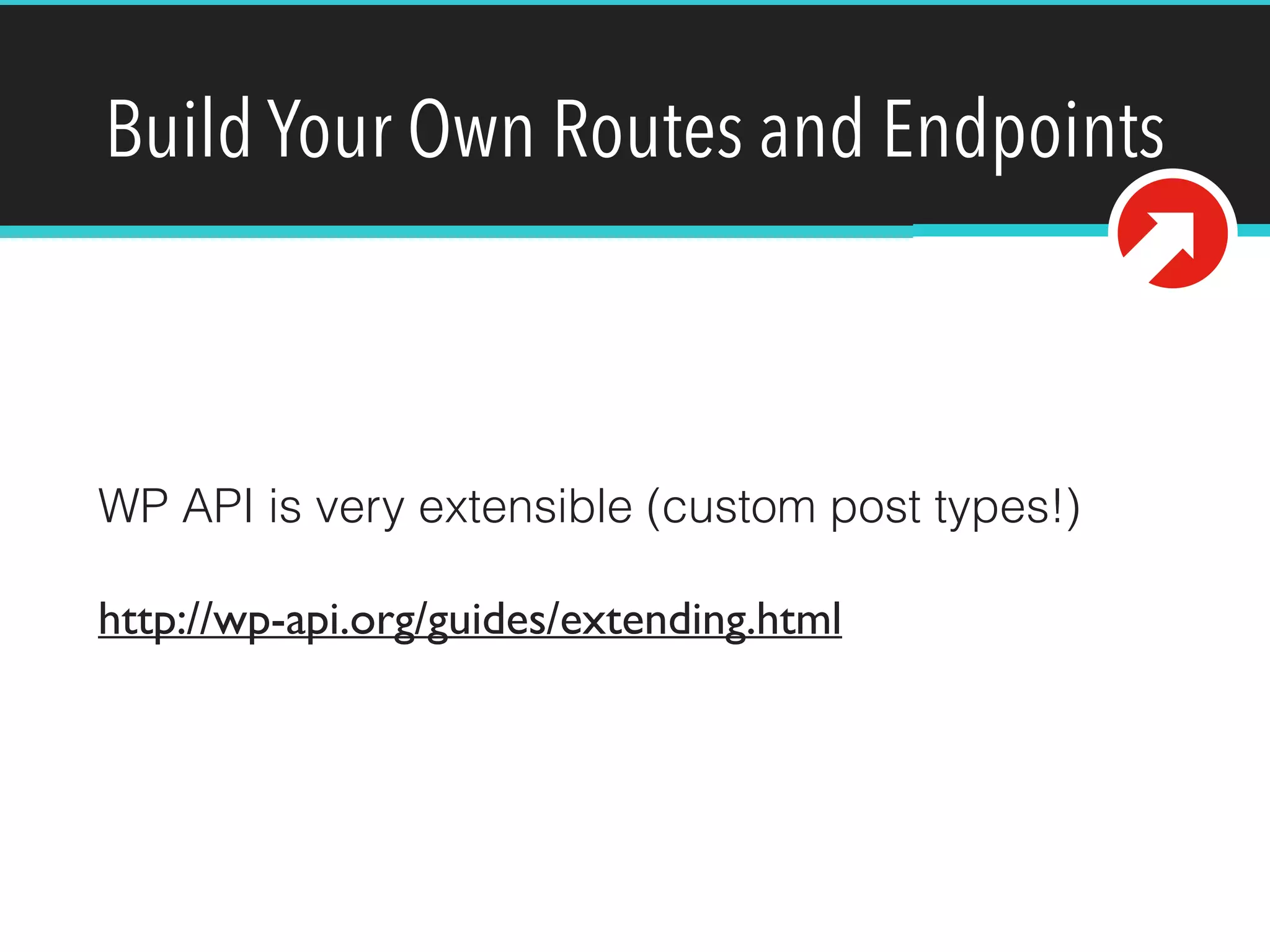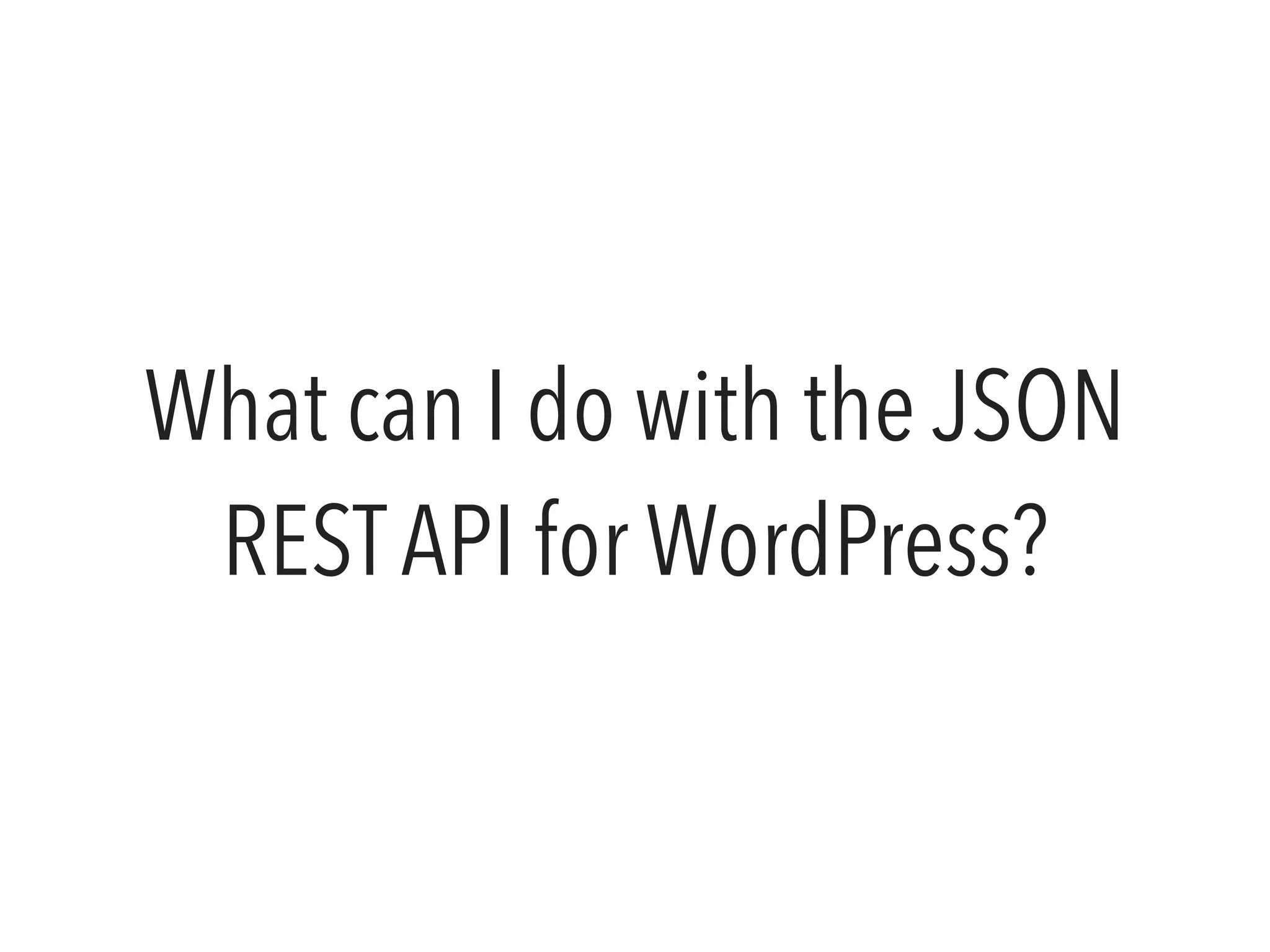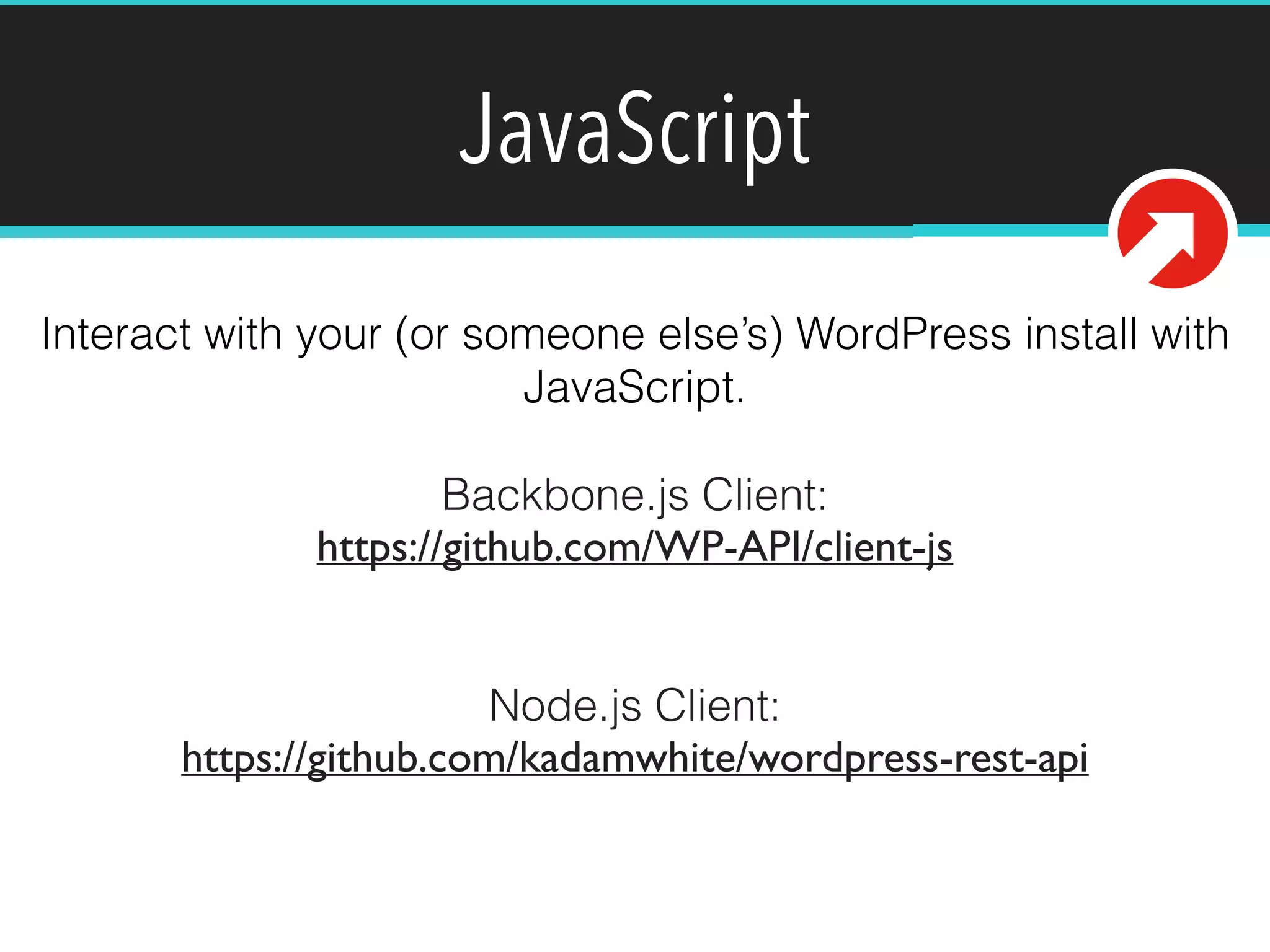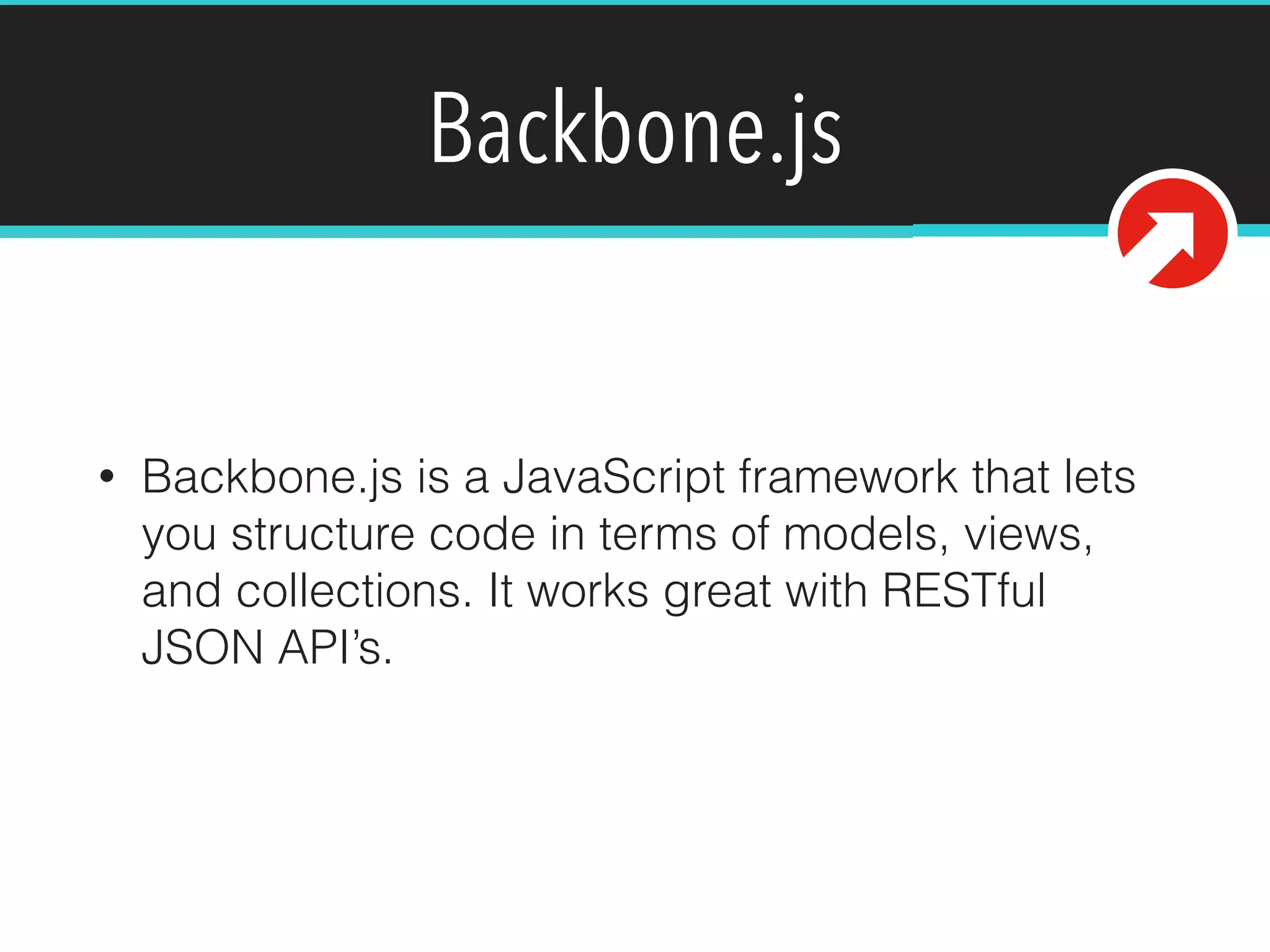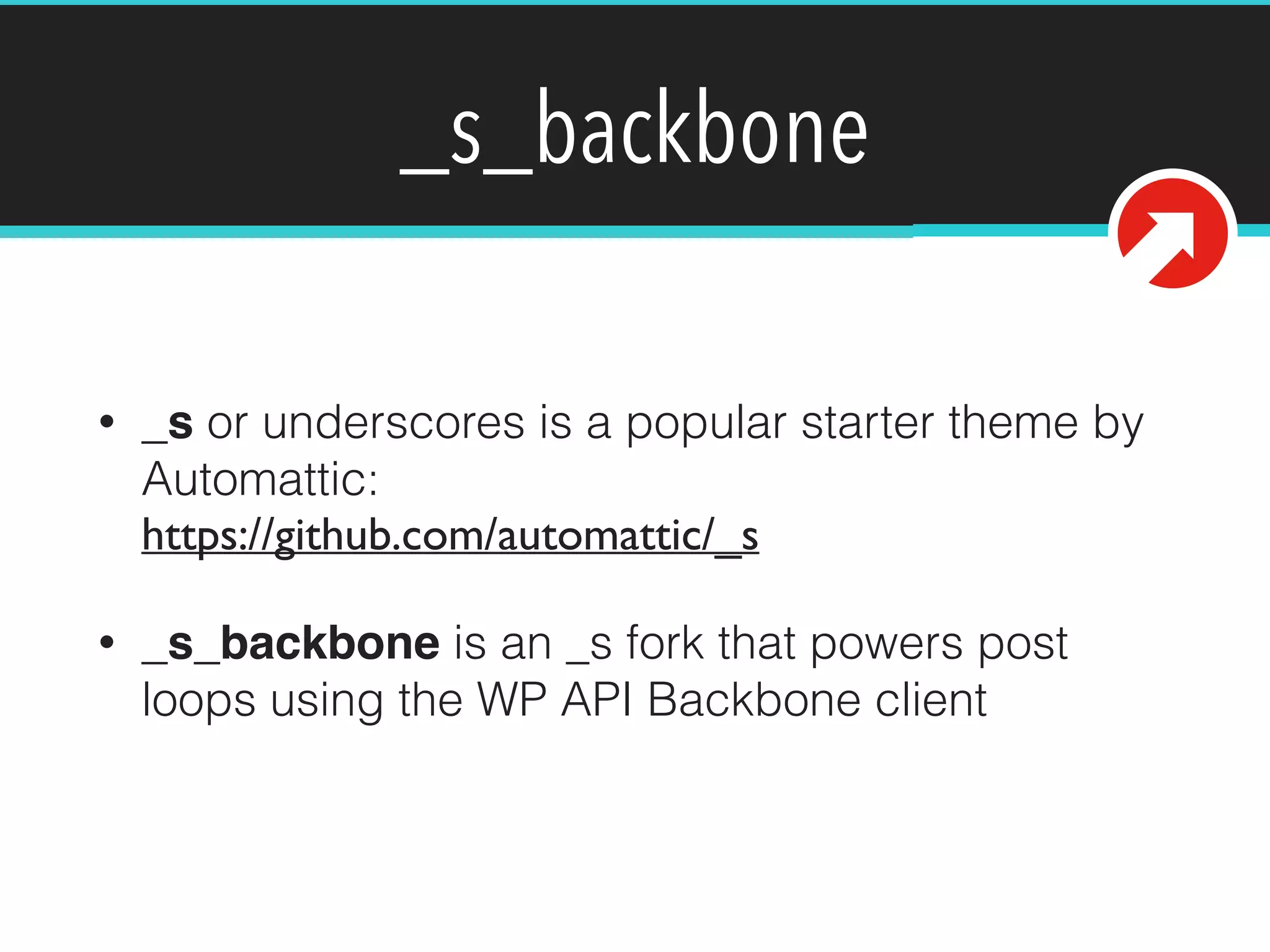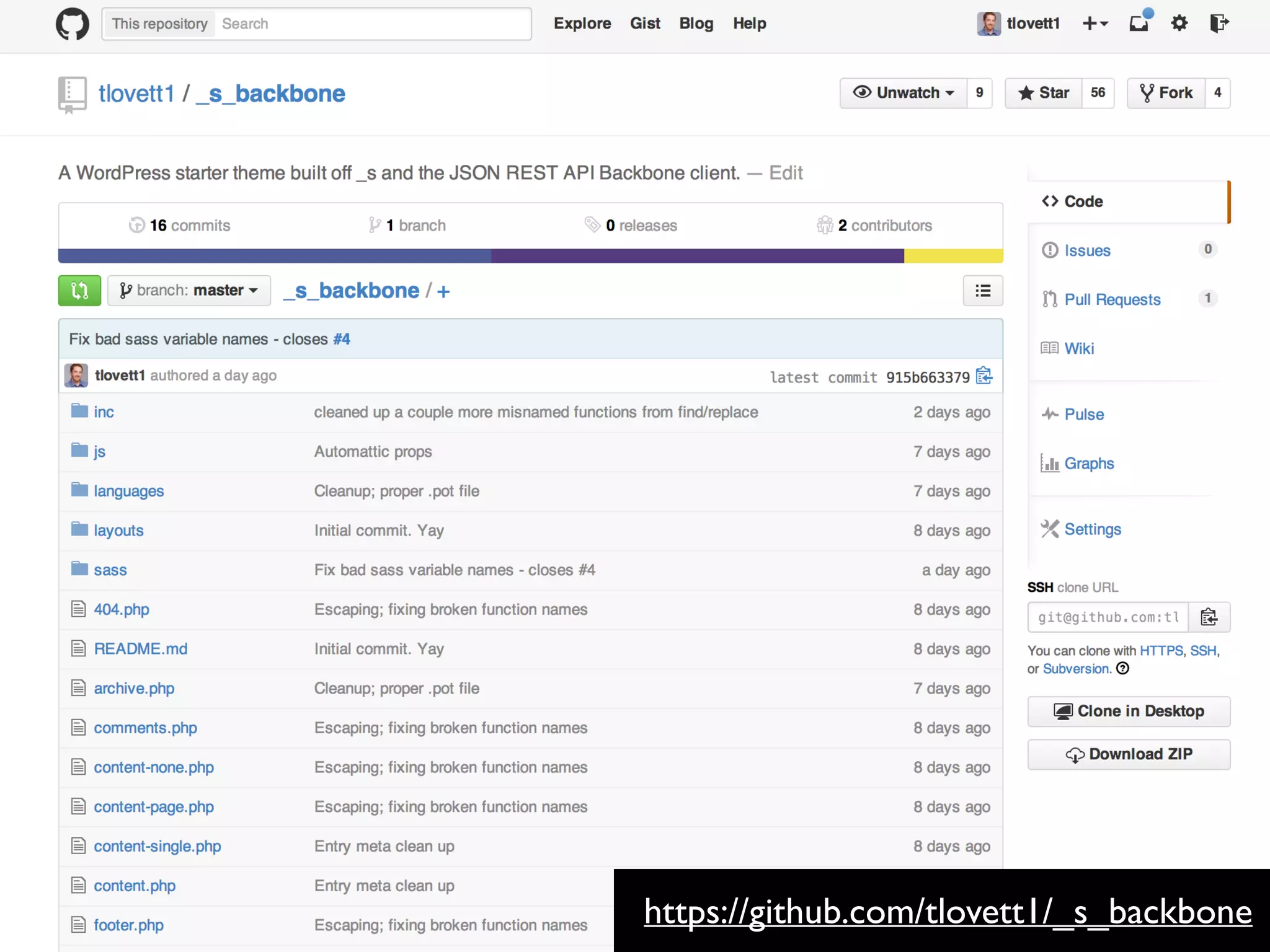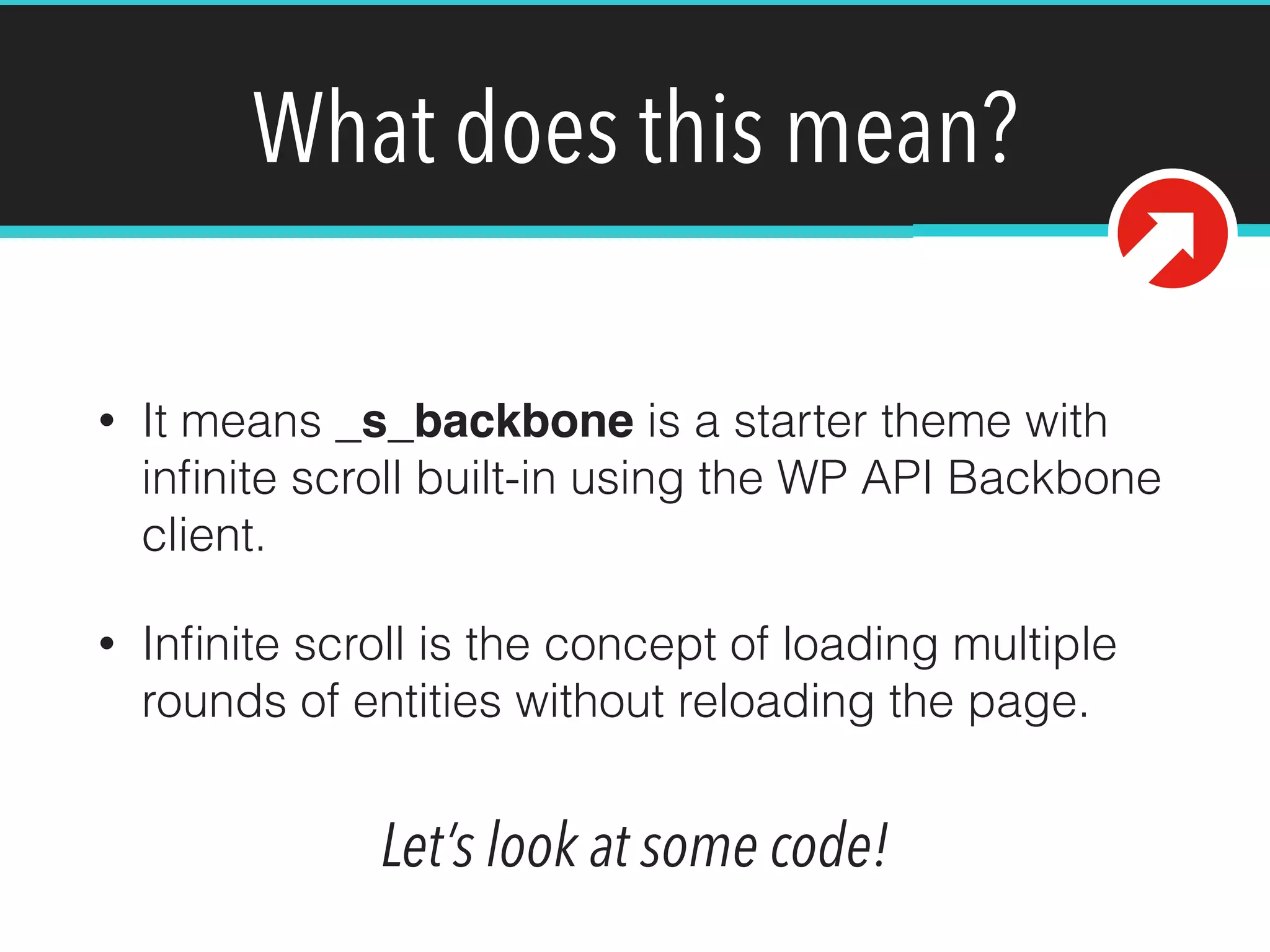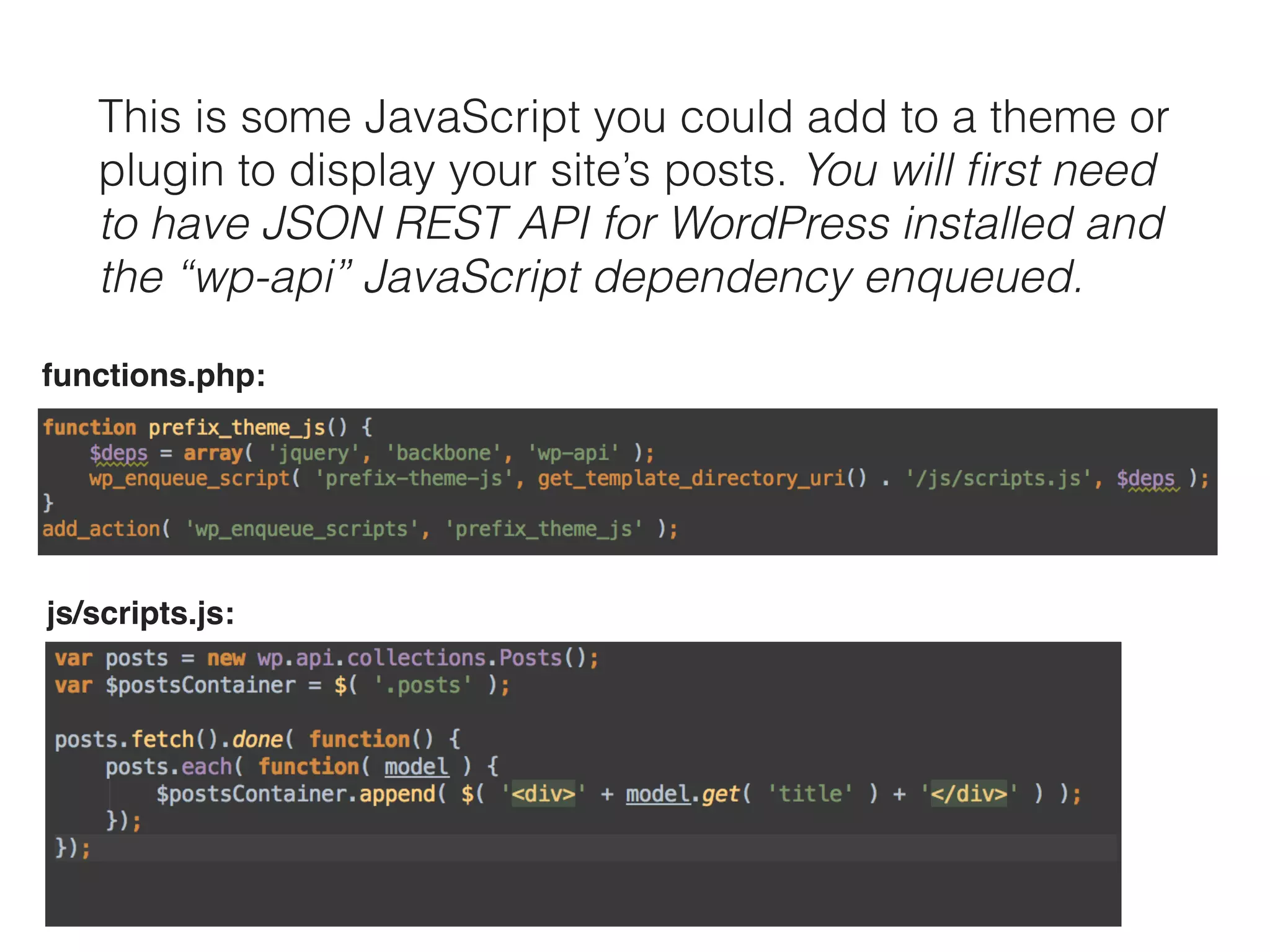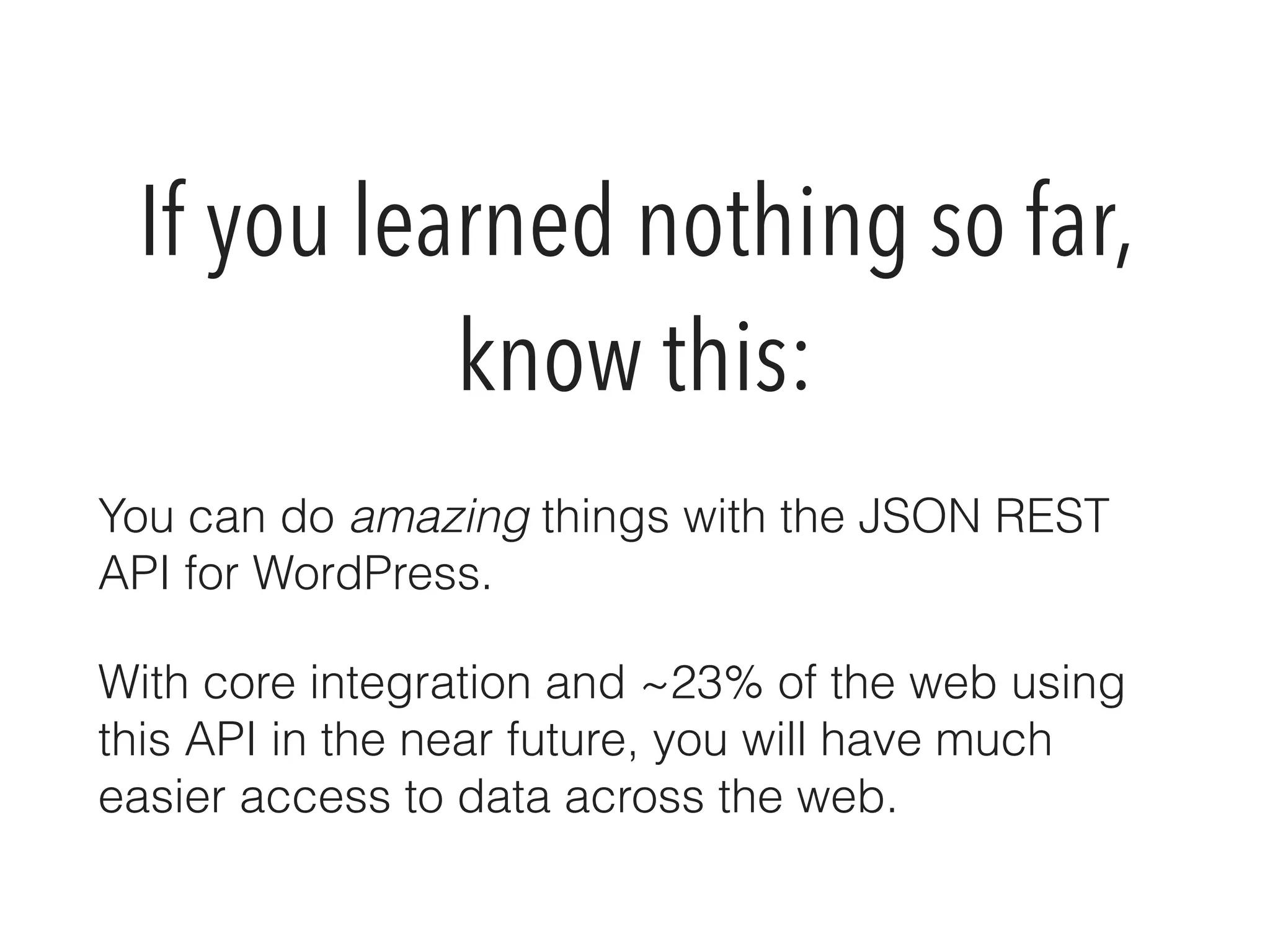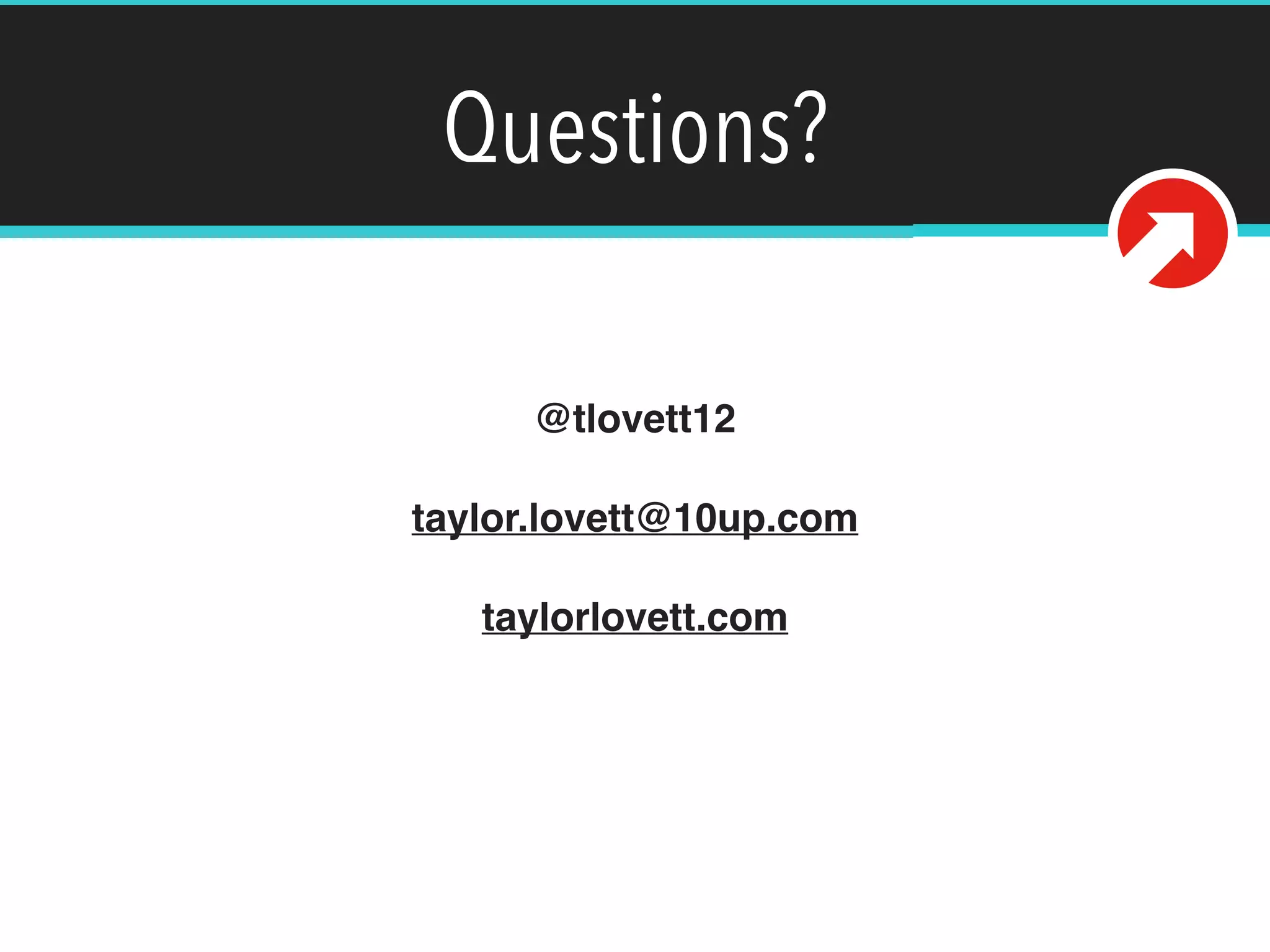The document discusses the new JSON REST API for WordPress, which provides a modern REST API for WordPress sites using JSON instead of the outdated XML-RPC format. It allows users to create, read, update and delete WordPress content like posts, pages, users and media through HTTP requests. The API can be accessed through plugins or by making requests directly to the /wp-json/ endpoints. It also supports features like authentication, pagination and filtering to build powerful applications that interact with WordPress content and data.
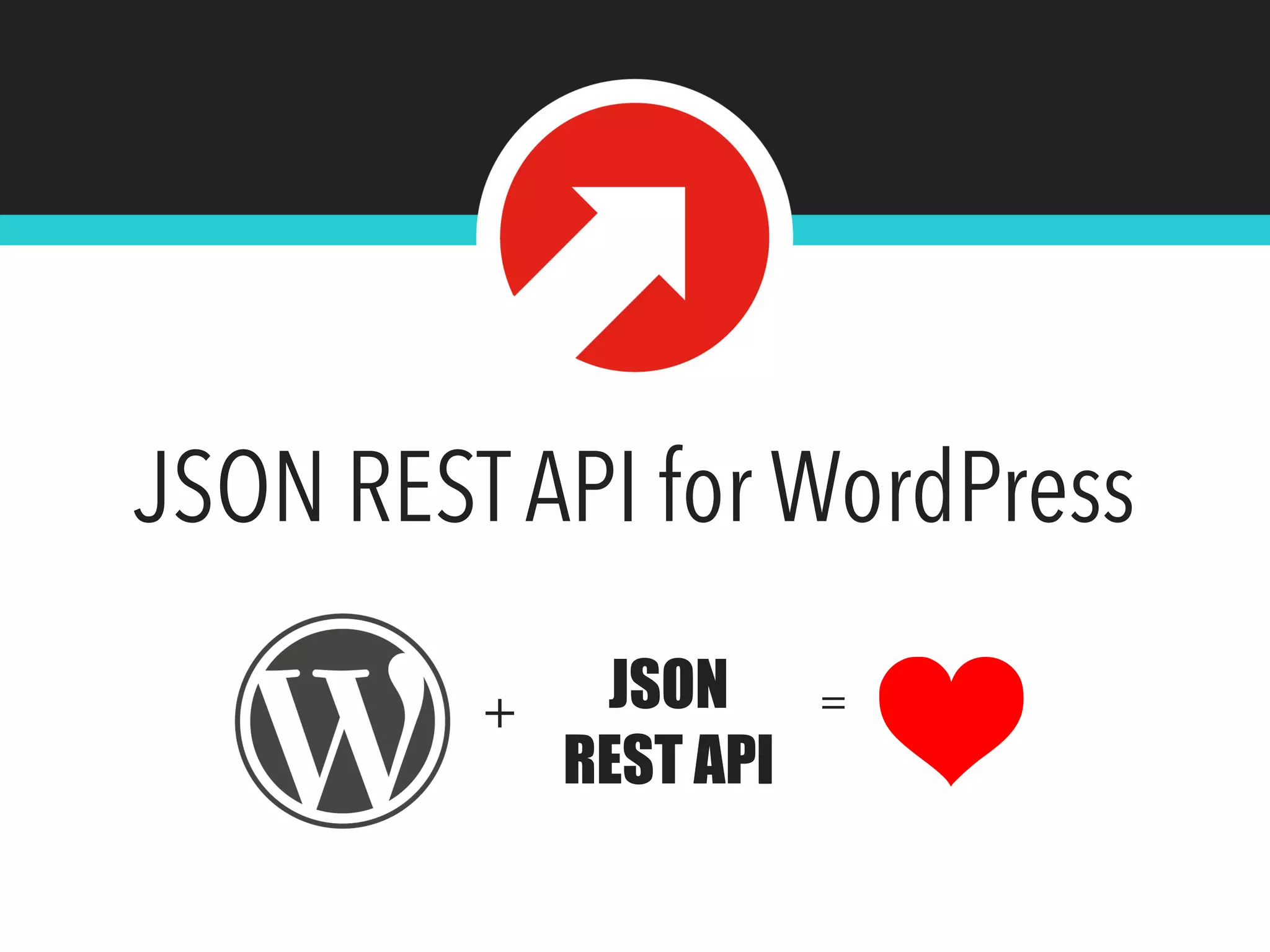
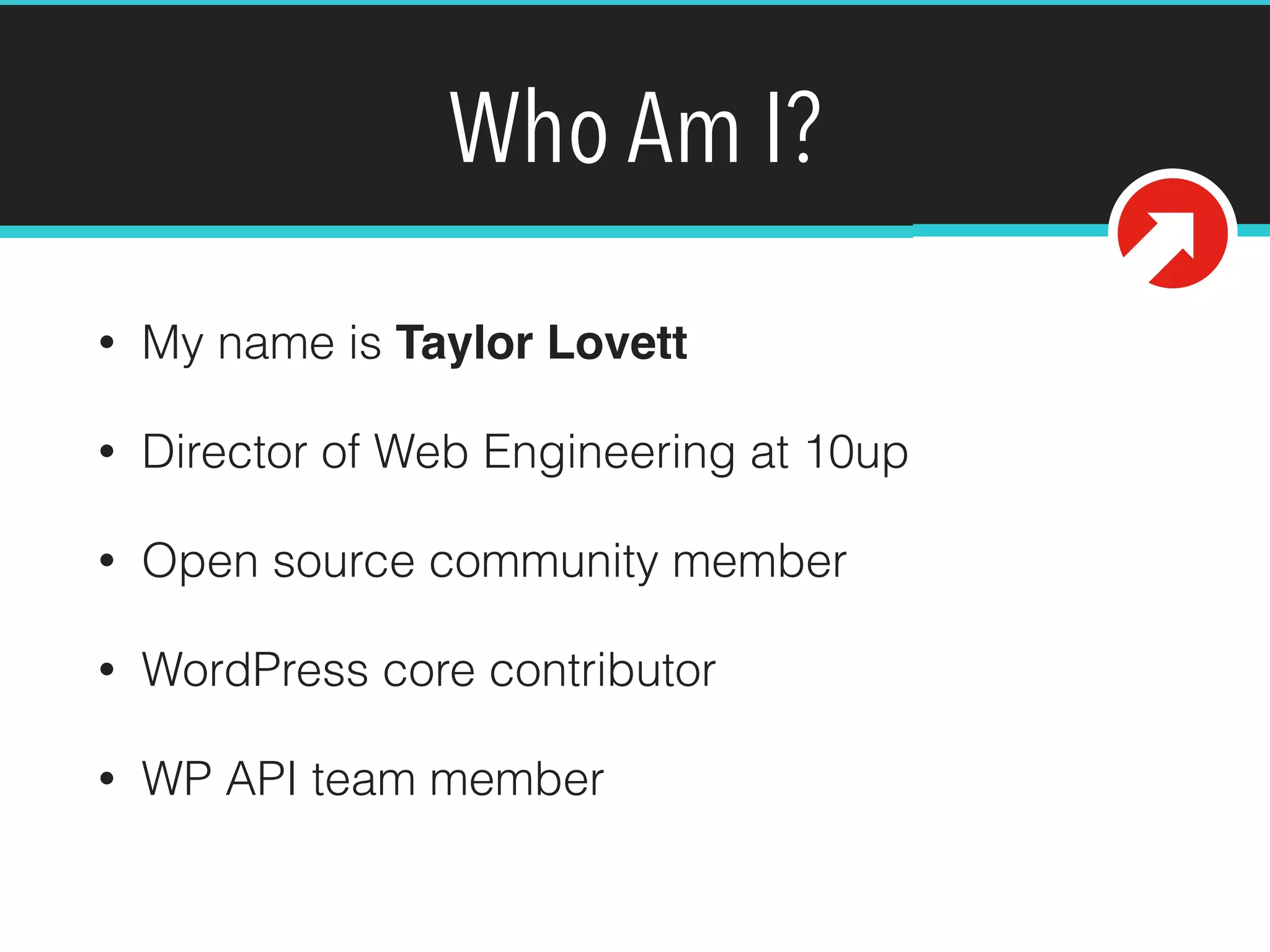

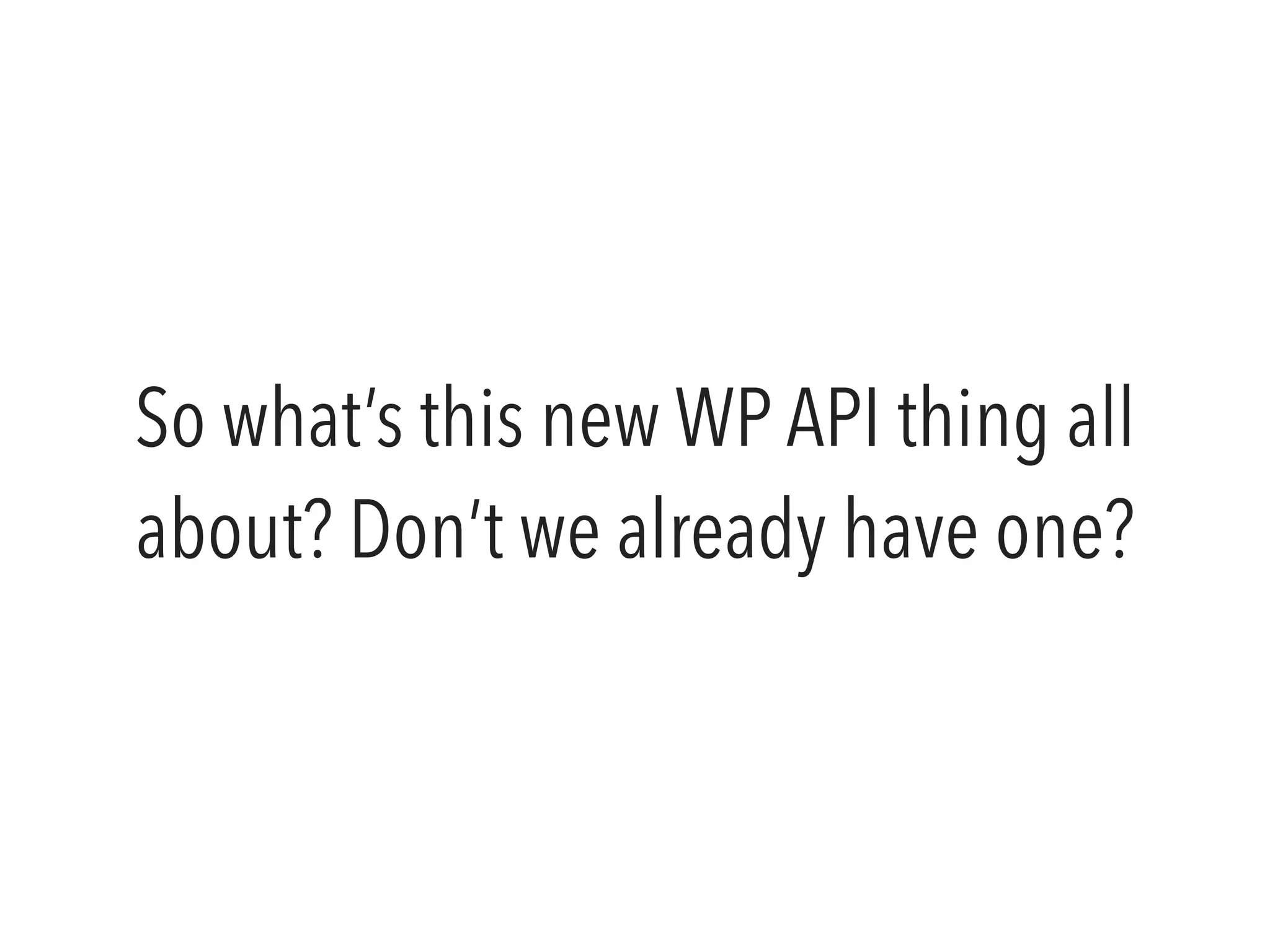
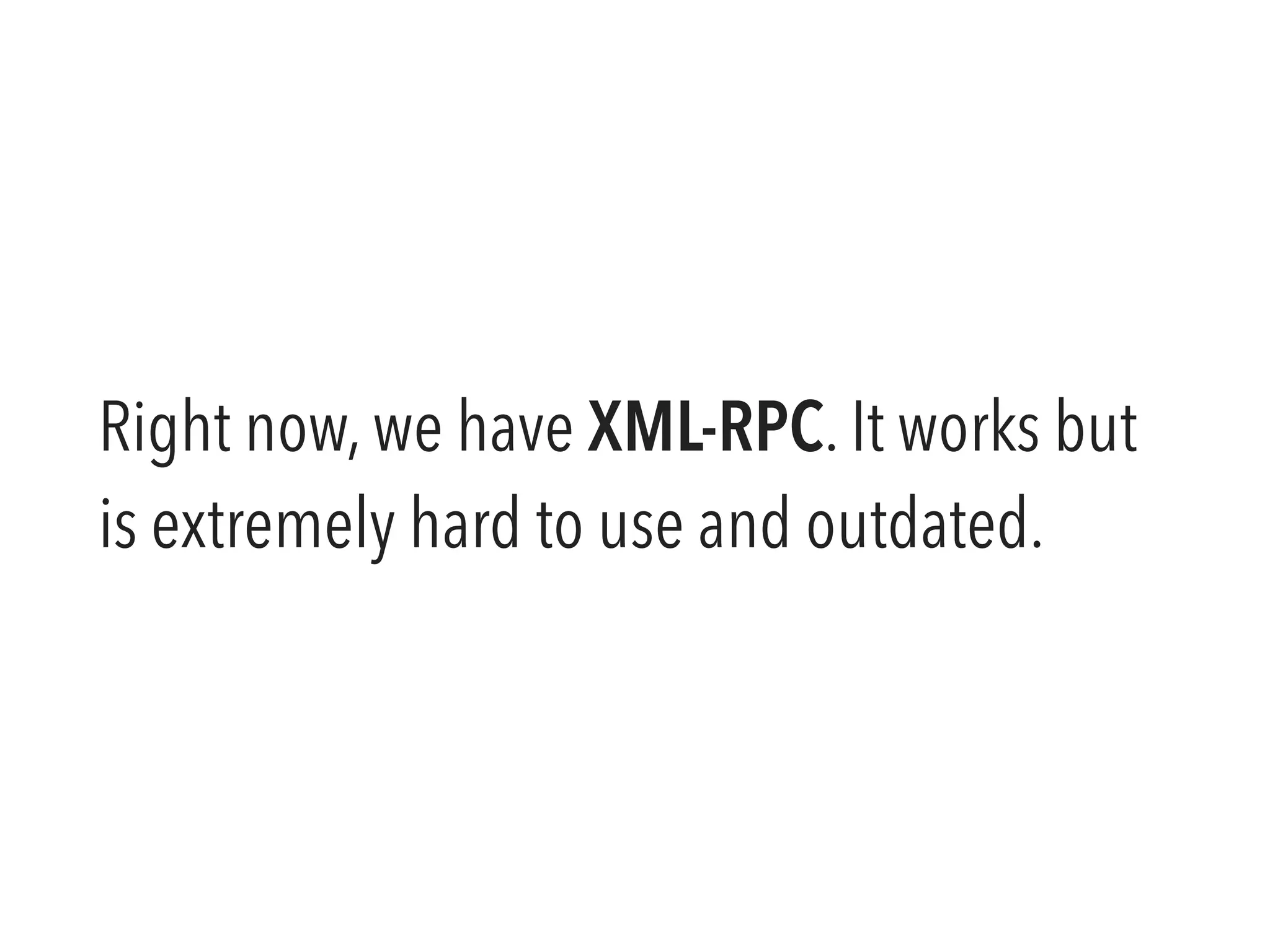
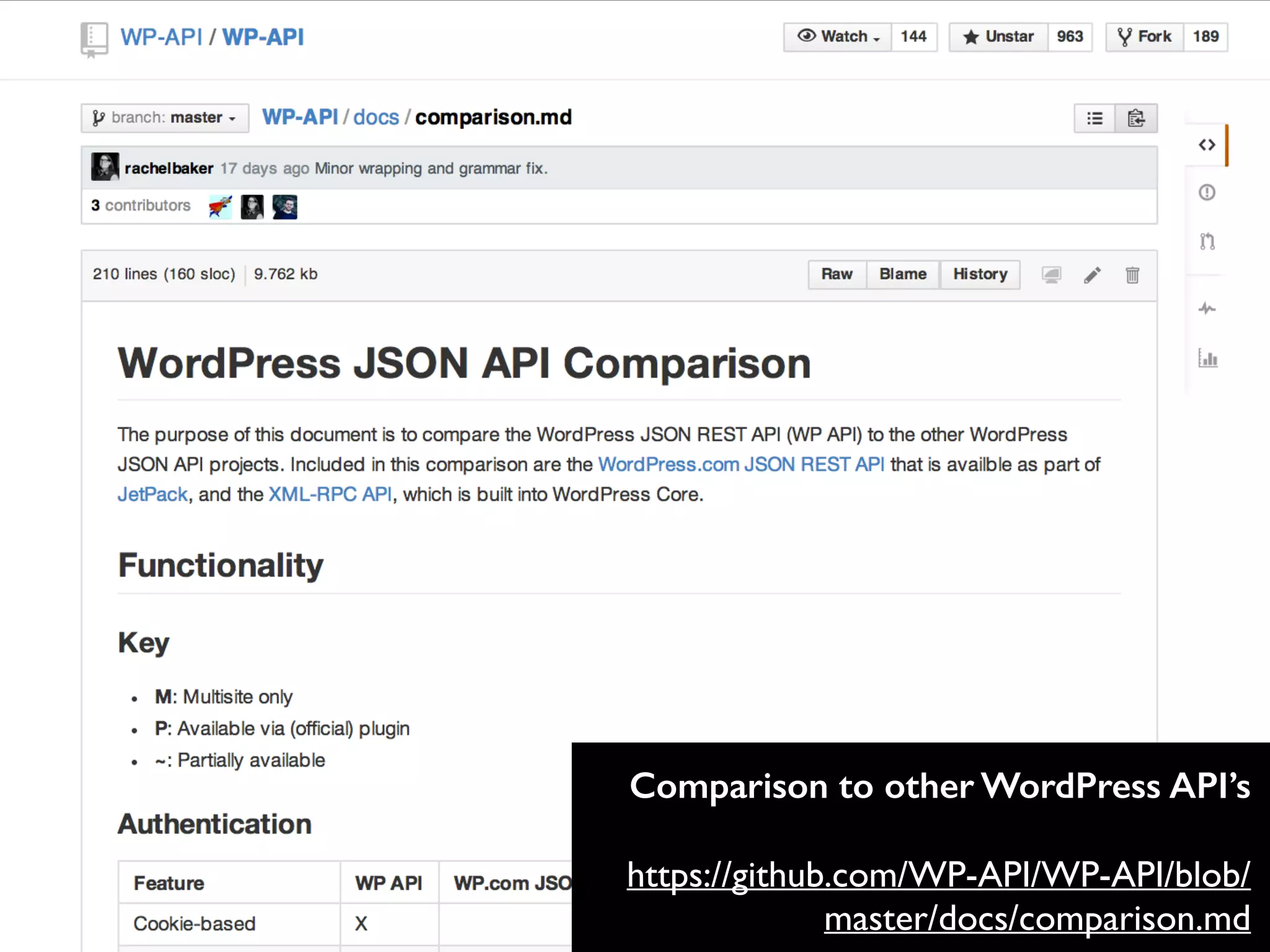
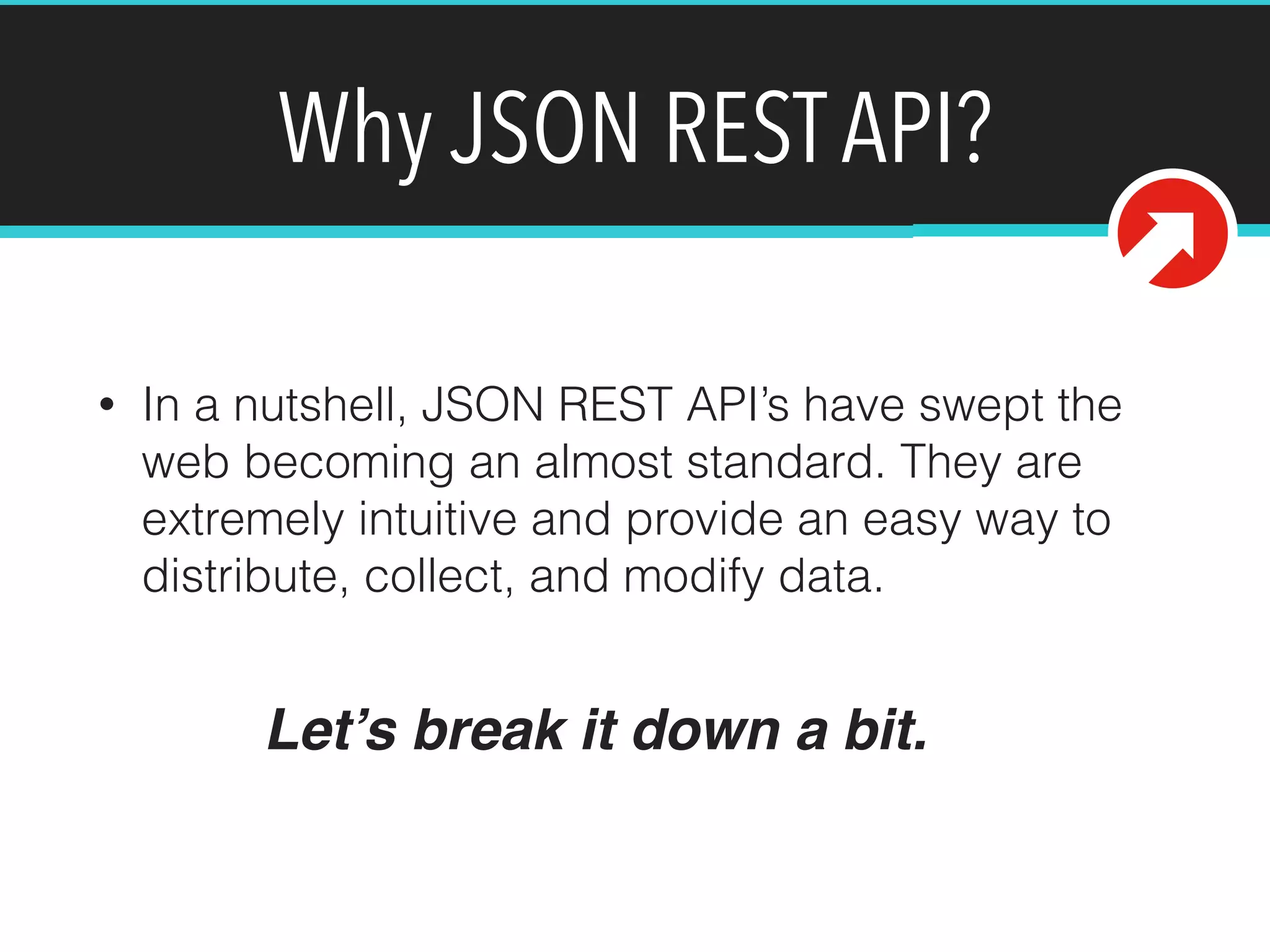
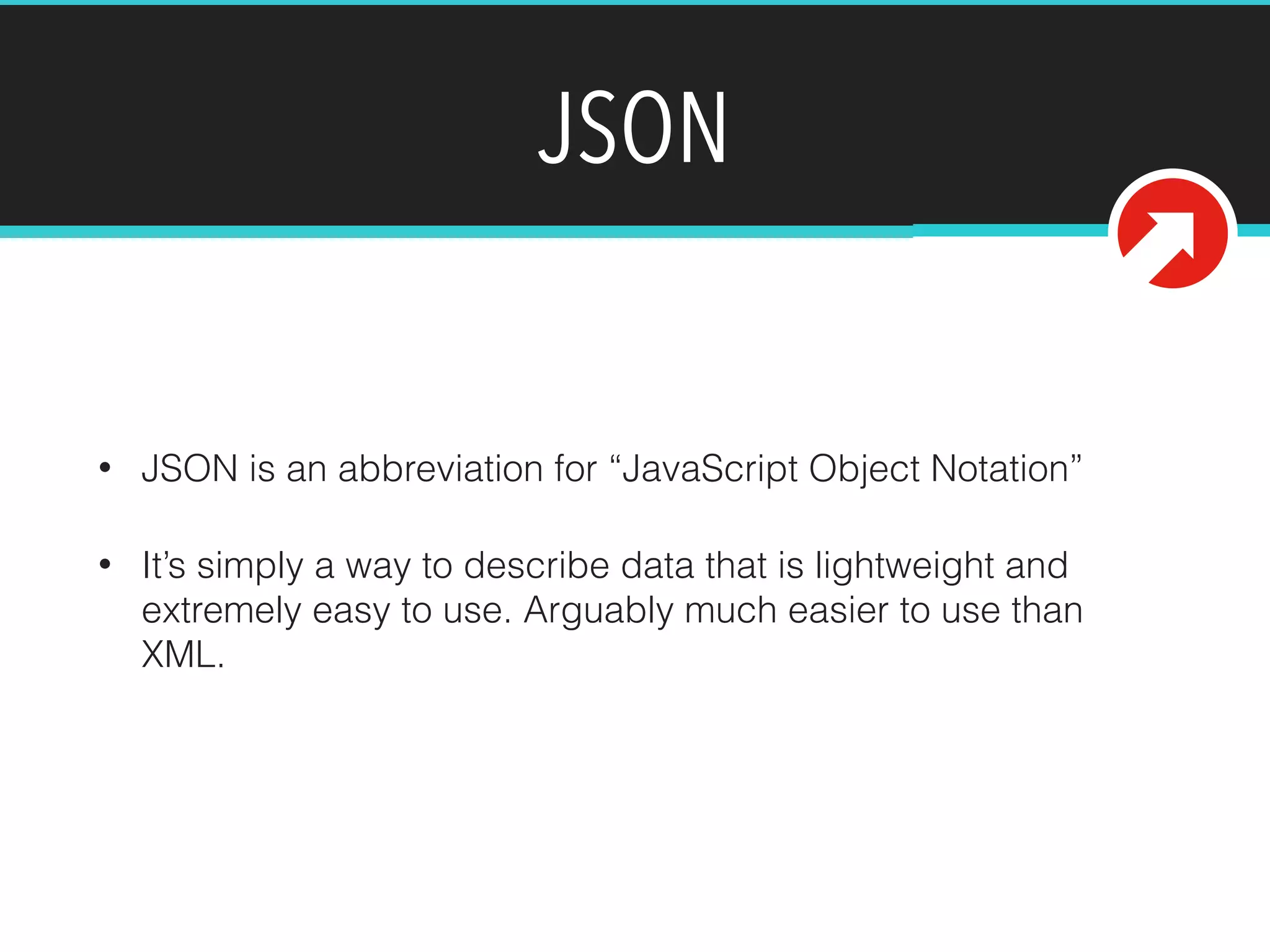
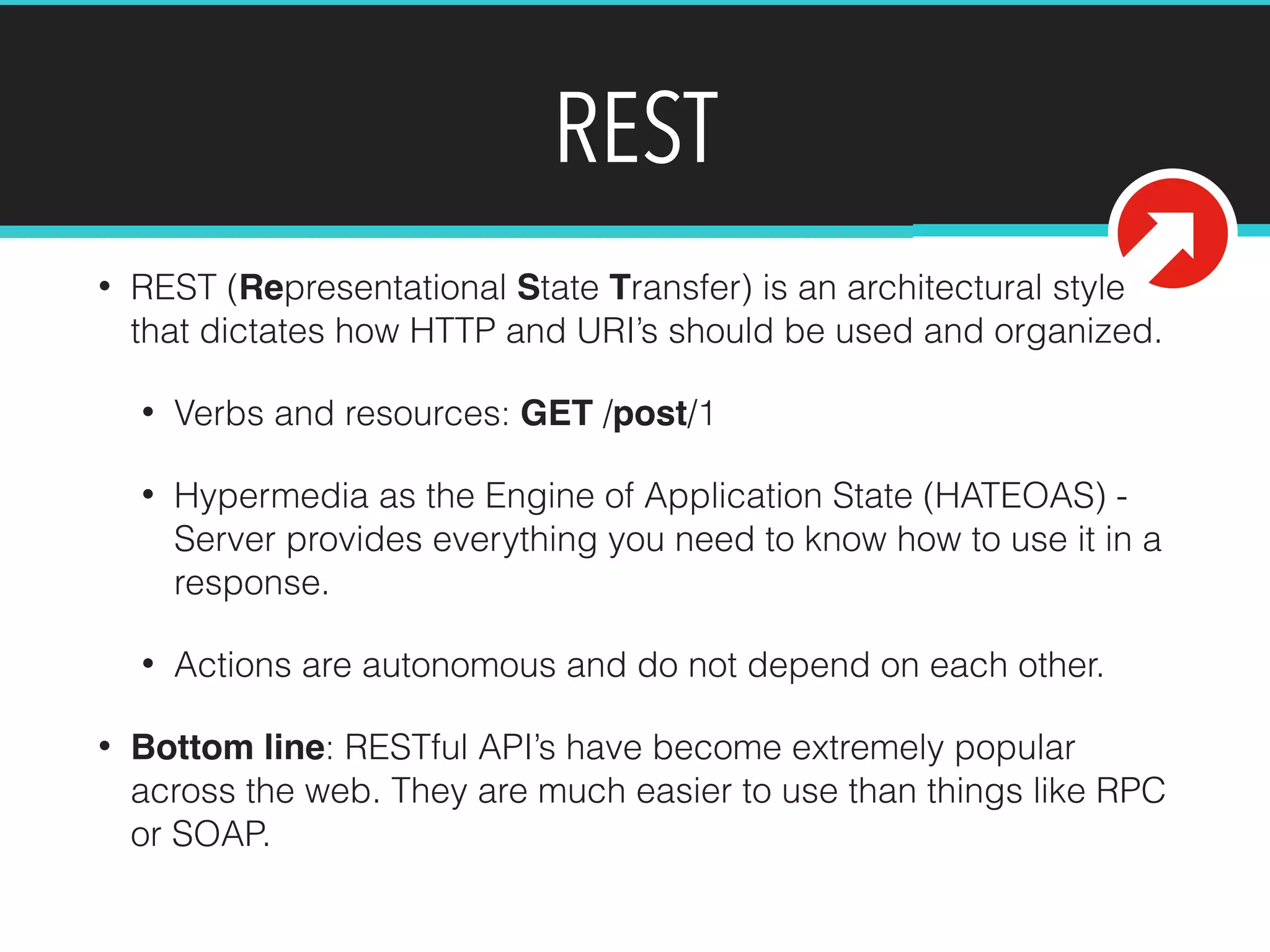
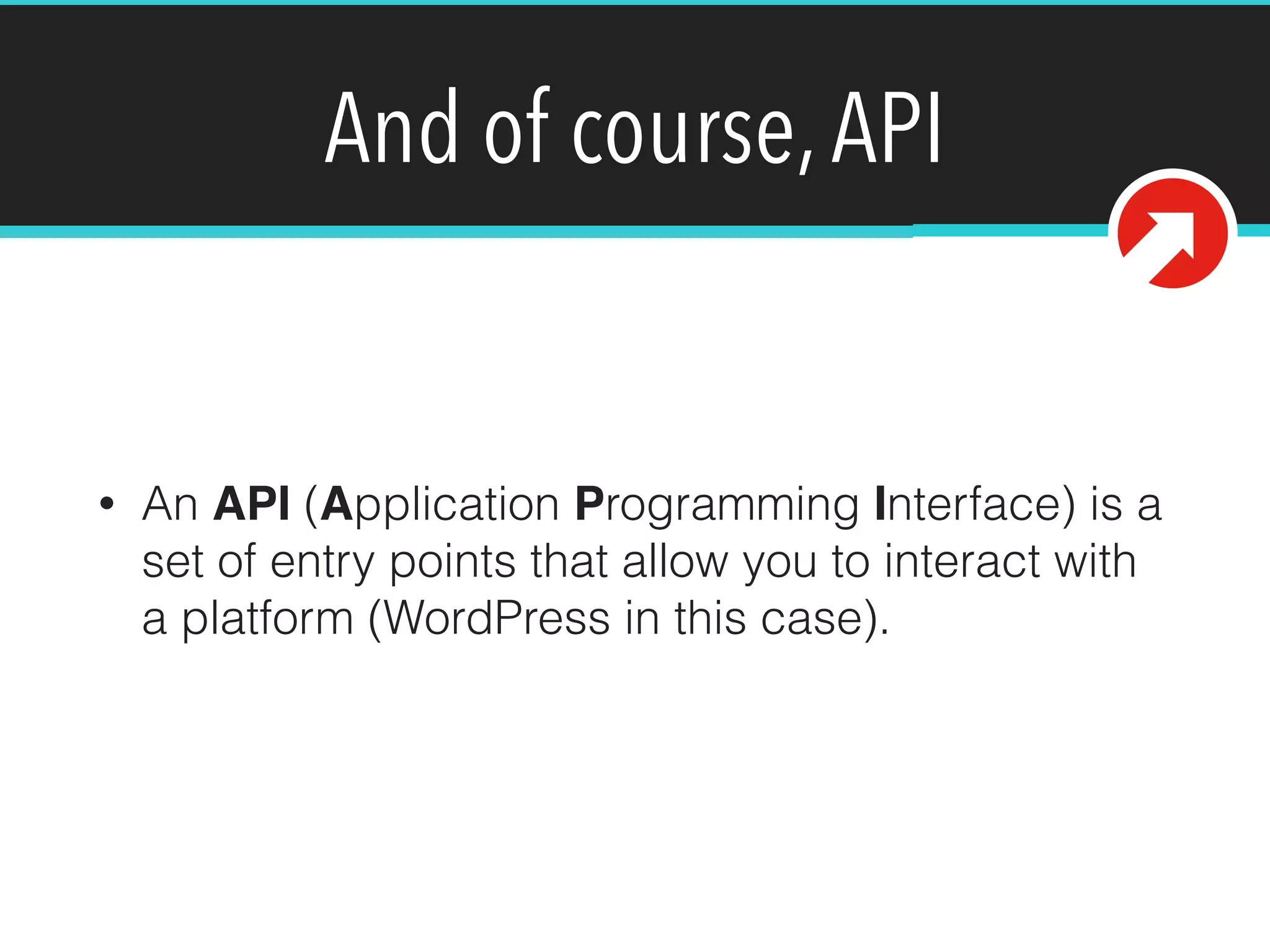

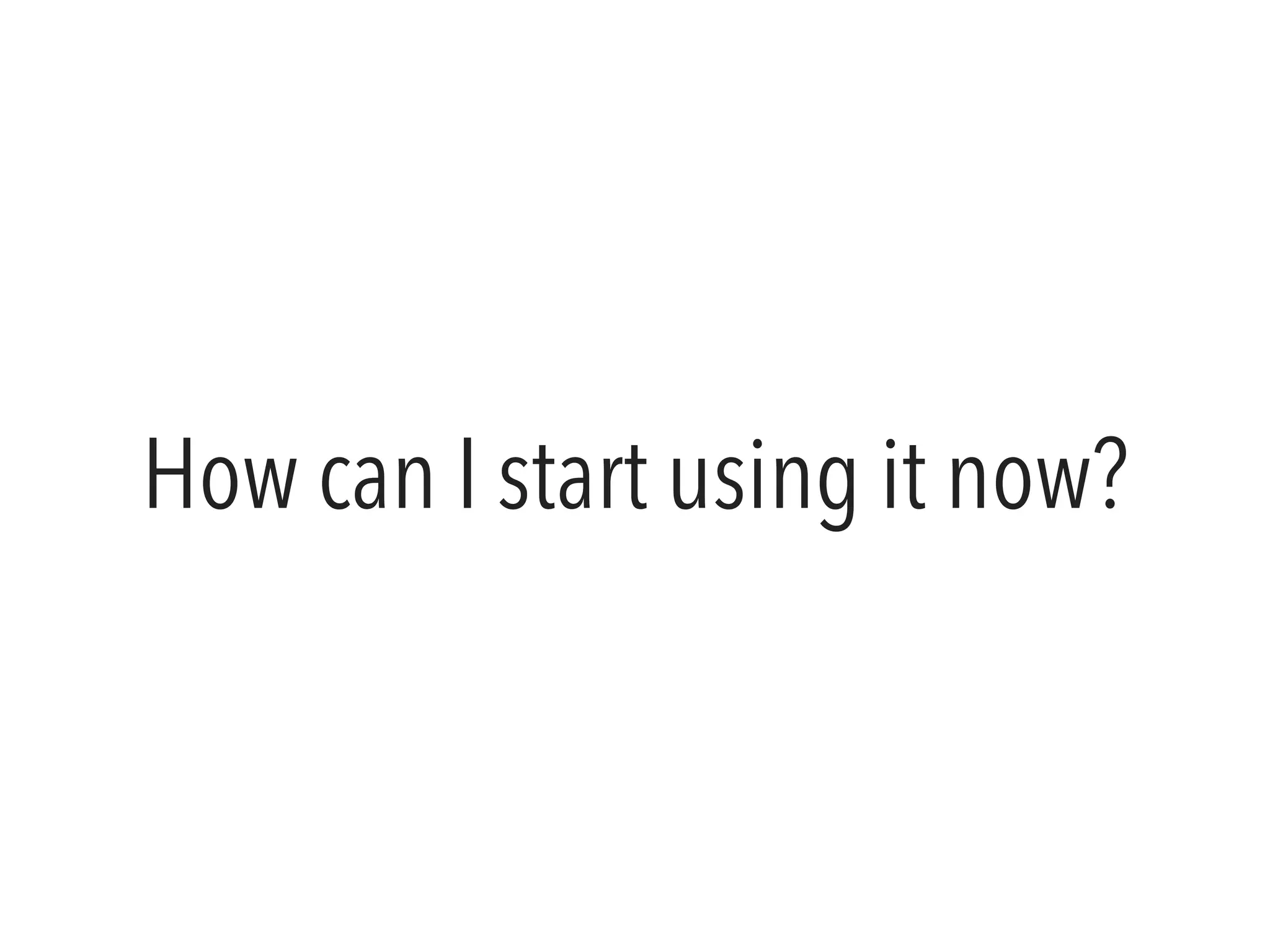
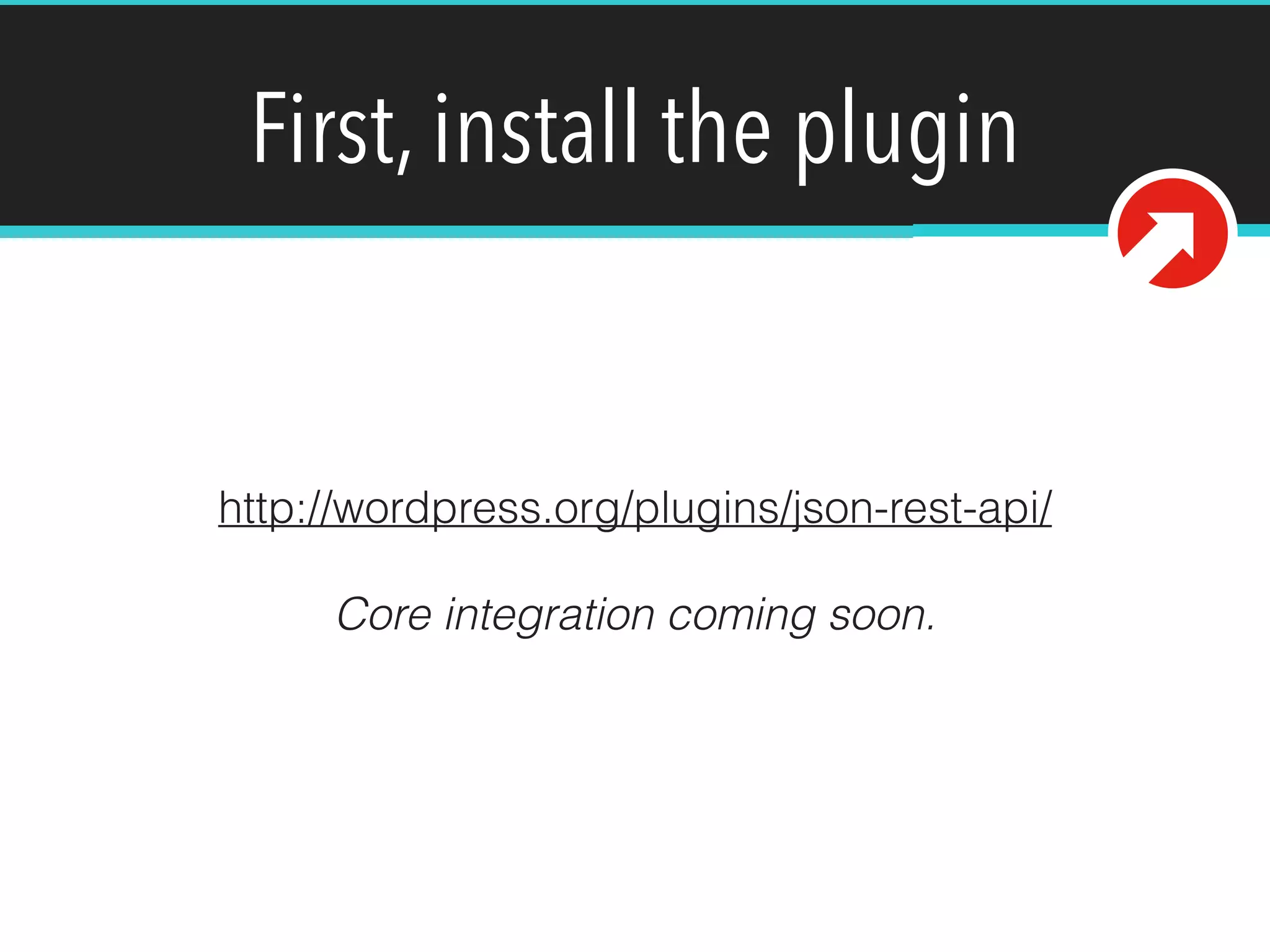
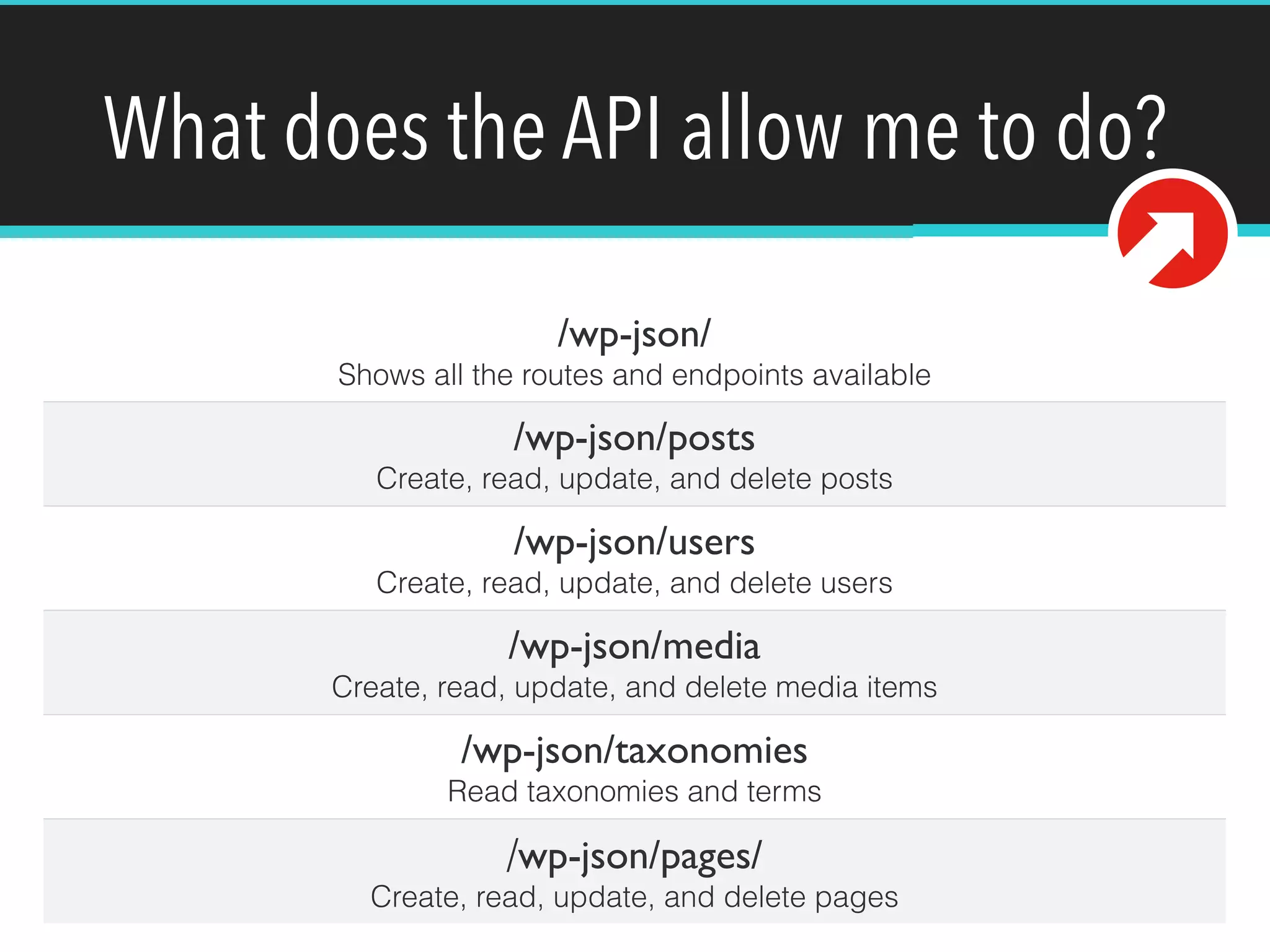
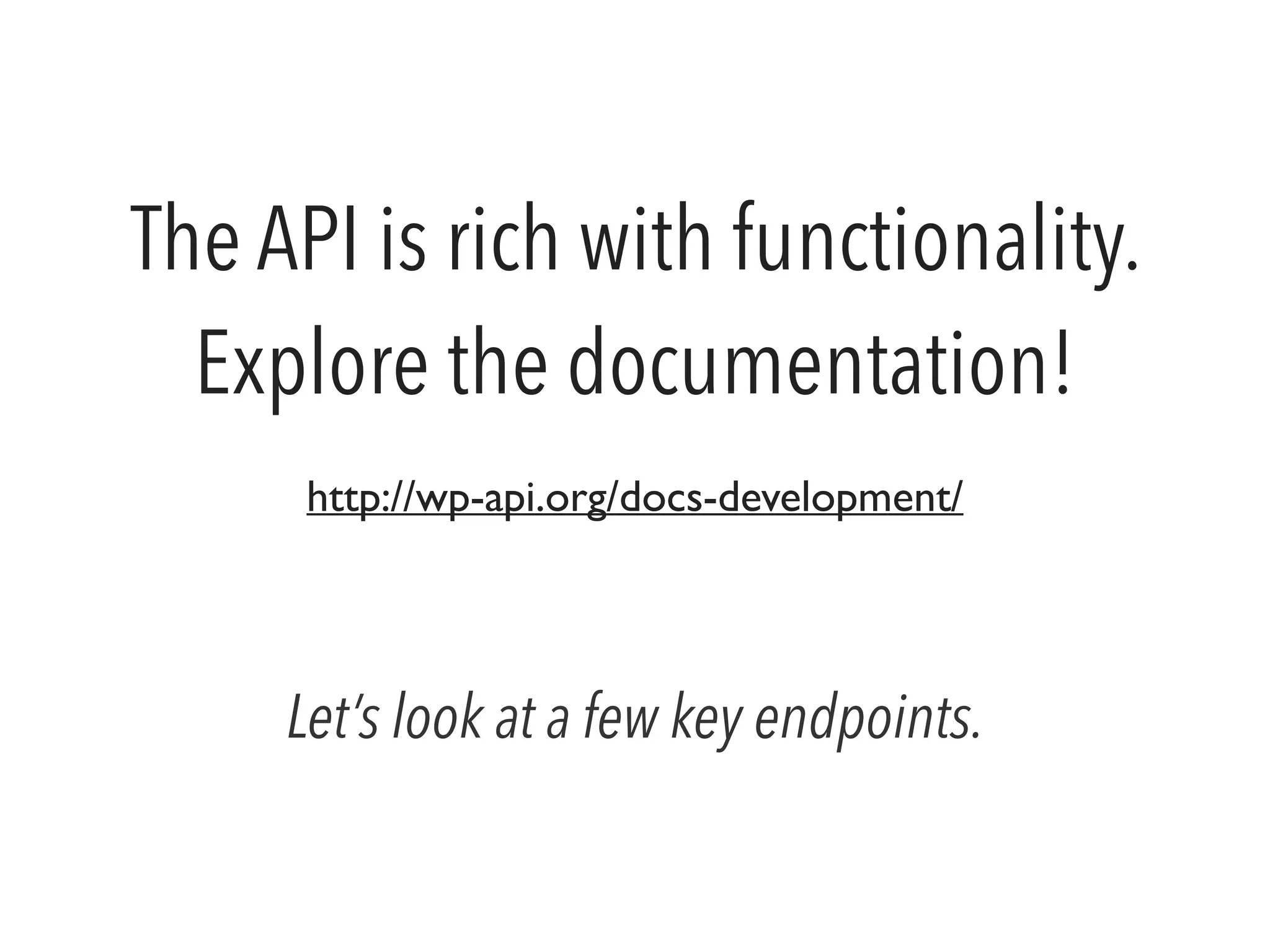
![List Posts
[{!
"ID": 11297,!
"title": "Post 19",!
"status": "publish",!
"type": "post",!
"author": 1,!
"content": "",!
"parent": null,!
"link": "http://example.com/2014/08/post-19/",!
"format": "standard",!
"slug": "post-19",!
"guid": "http://example.com/2014/08/post-19/",!
"excerpt": null,!
"menu_order": 0,!
"comment_status": "closed",!
"ping_status": "open",!
"sticky": false,!
"meta": {},!
"featured_image": null,!
"terms": {}!
}]
GET /wp-json/posts](https://image.slidesharecdn.com/wp-api-140927111247-phpapp01/75/JSON-REST-API-for-WordPress-16-2048.jpg)
![List Posts
Endpoint: /wp-json/posts
Takes a number of useful parameters:
• Filter[]: Accepts WP_Query arguments
• Page: Allows for pagination
• Context: Determines usage context i.e. “view or edit”
• …
https://github.com/WP-API/WP-API/blob/master/docs/routes/routes.md](https://image.slidesharecdn.com/wp-api-140927111247-phpapp01/75/JSON-REST-API-for-WordPress-17-2048.jpg)
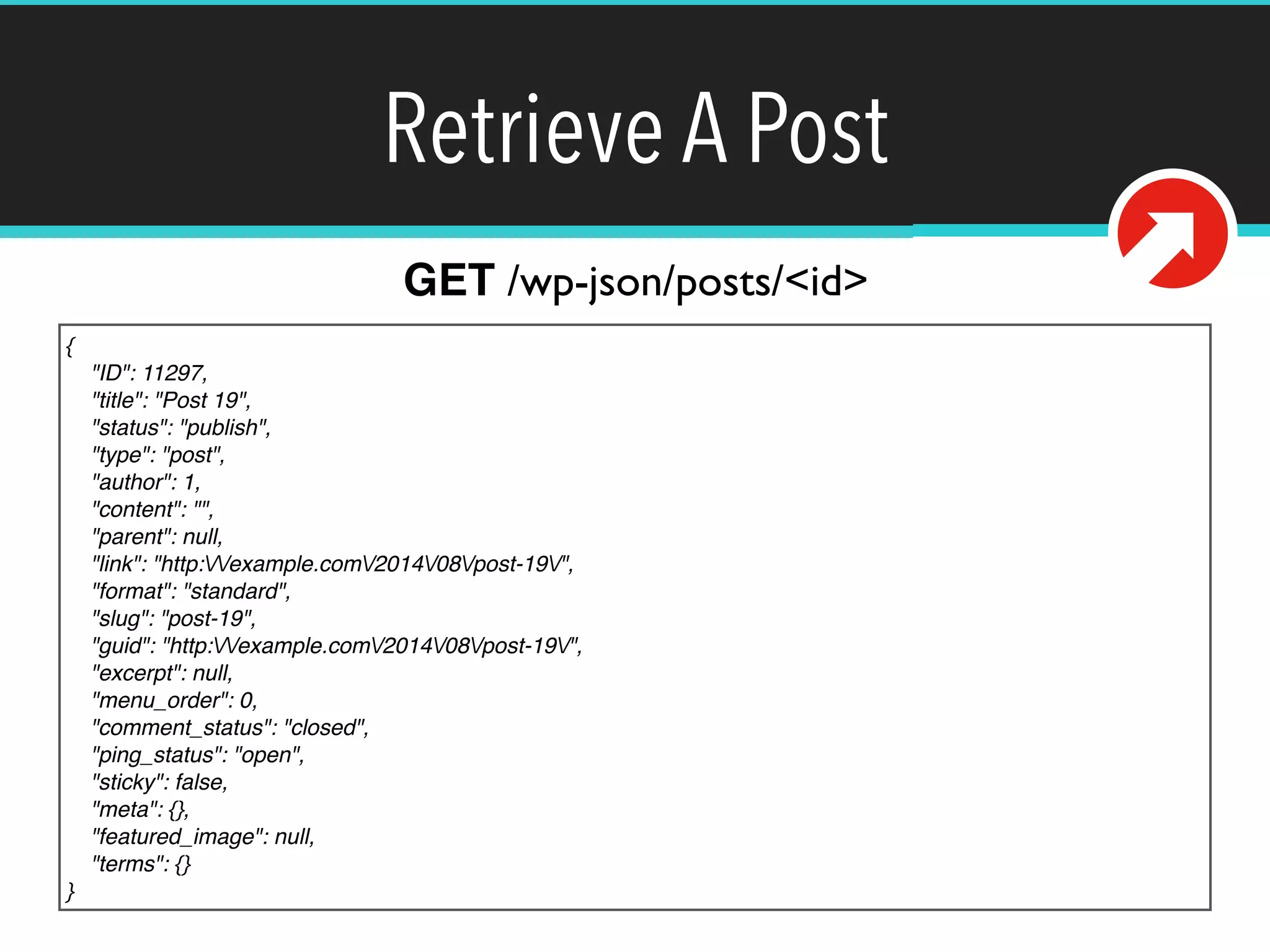
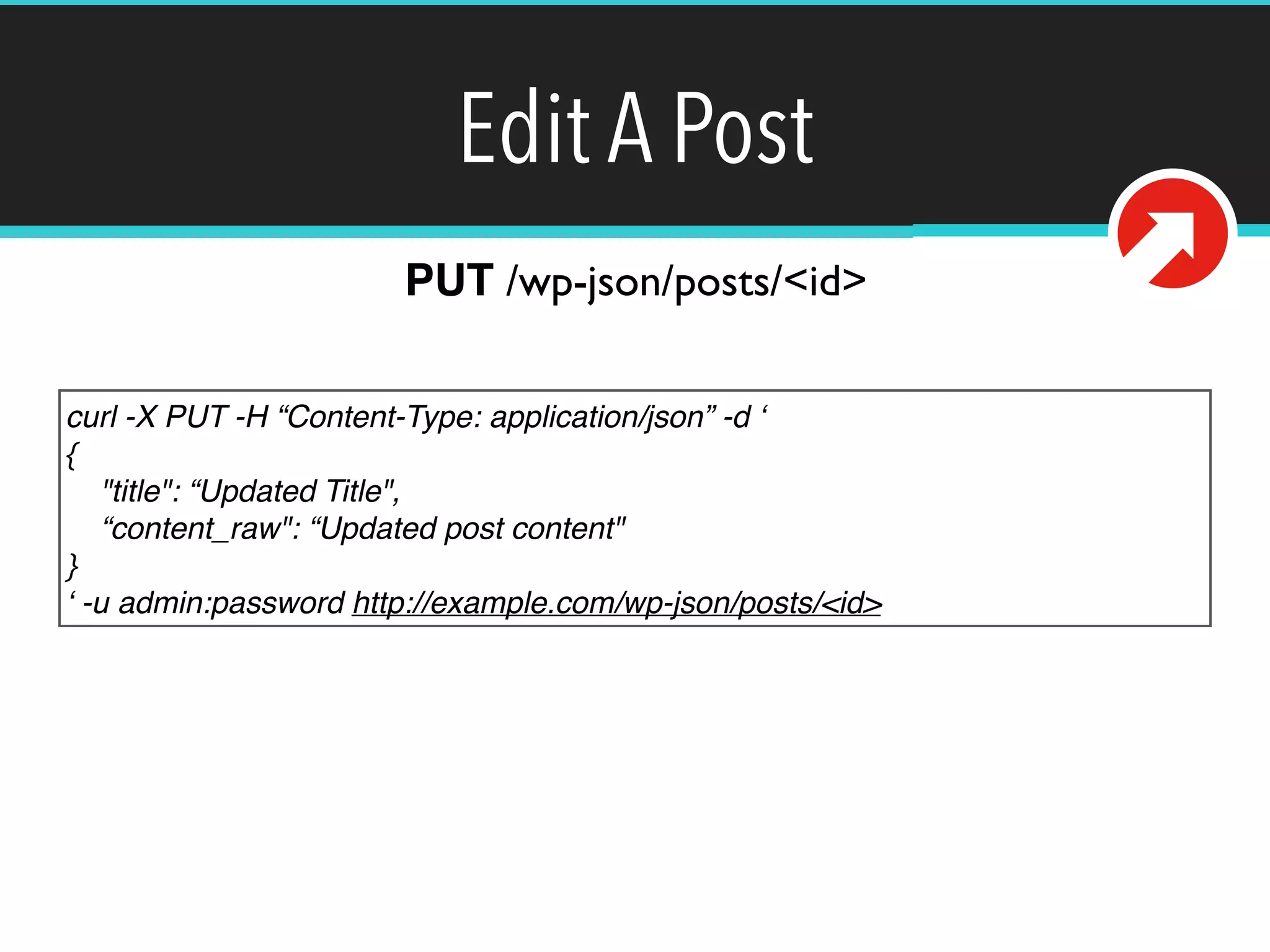
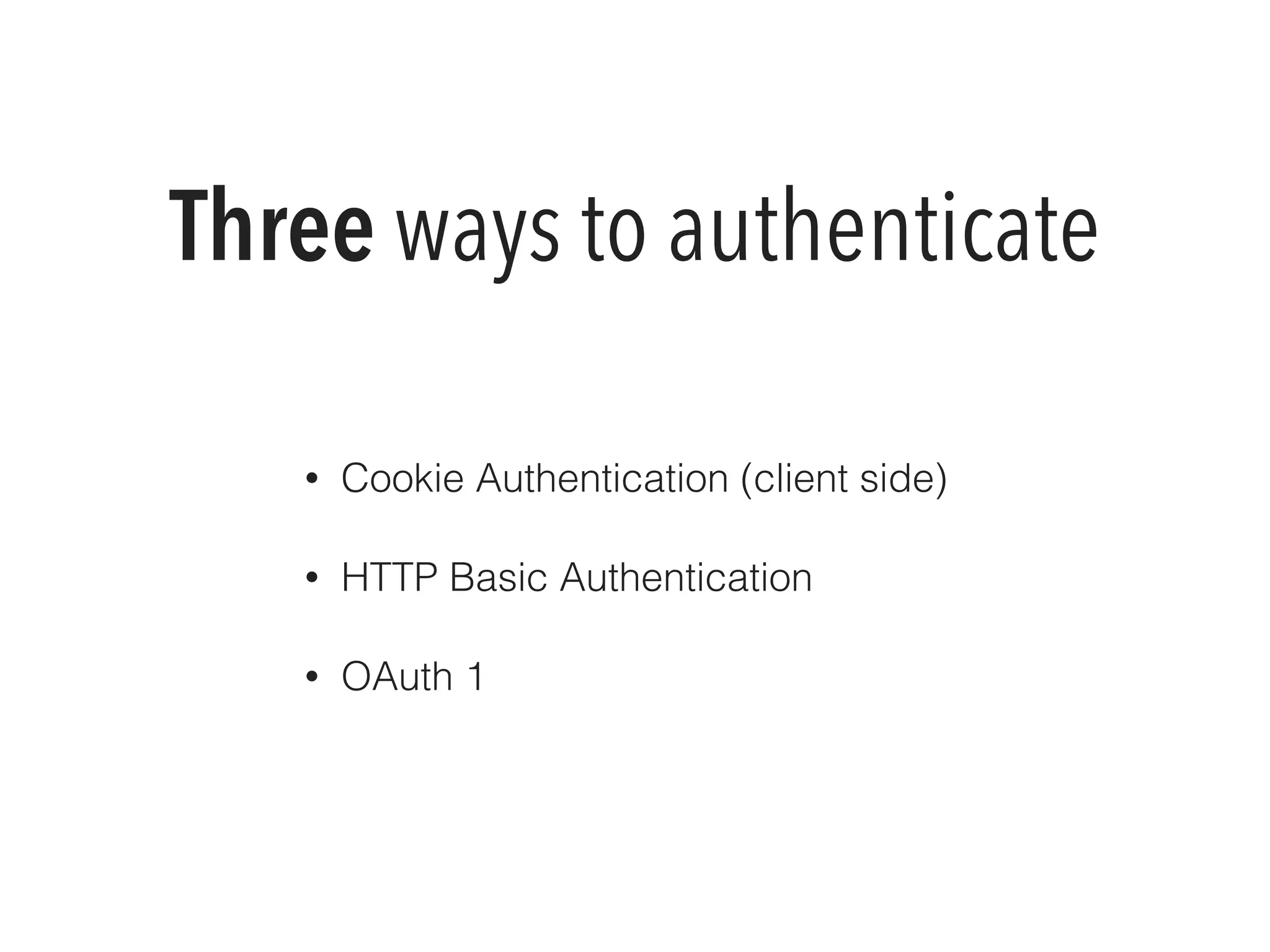
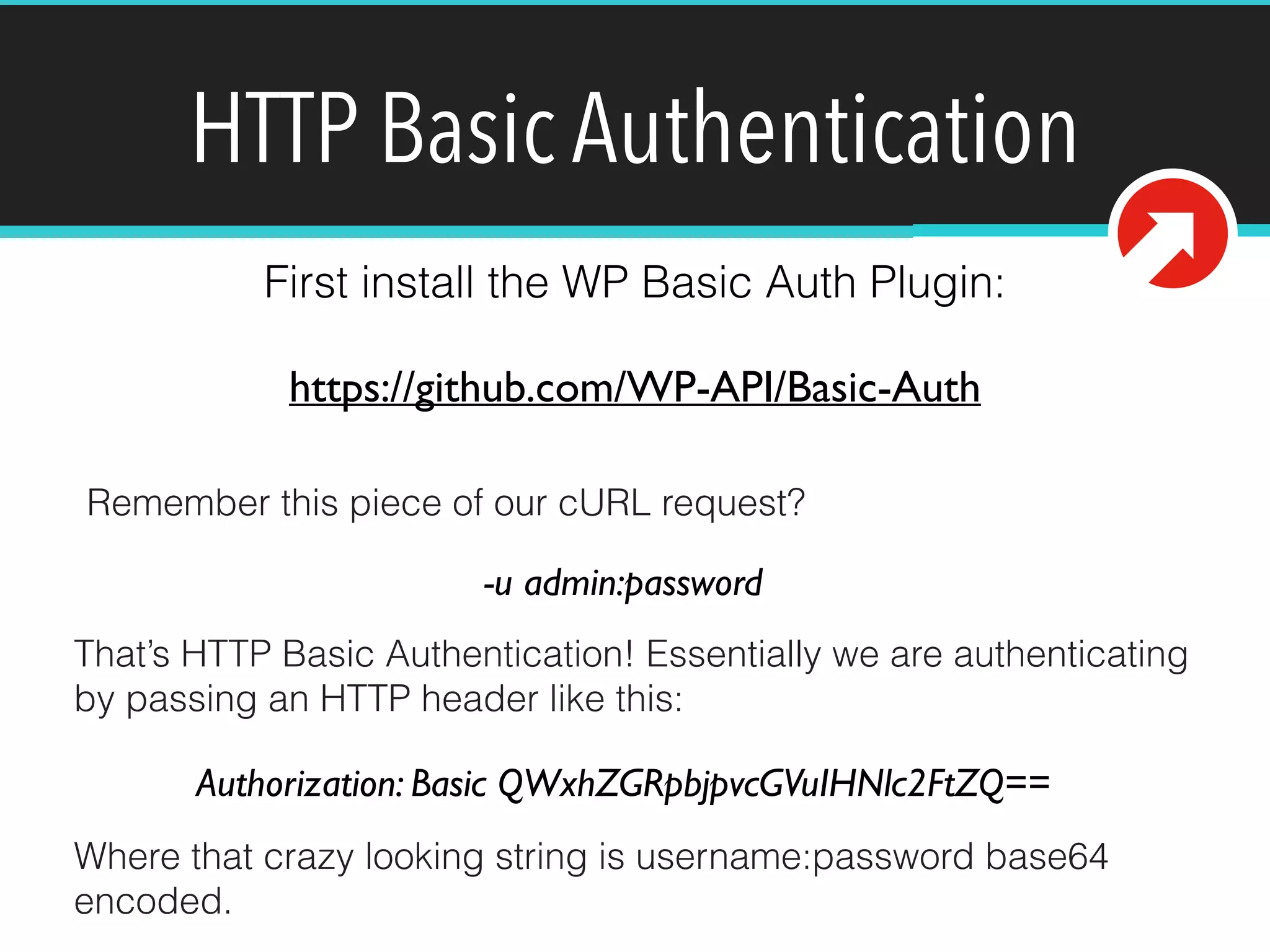
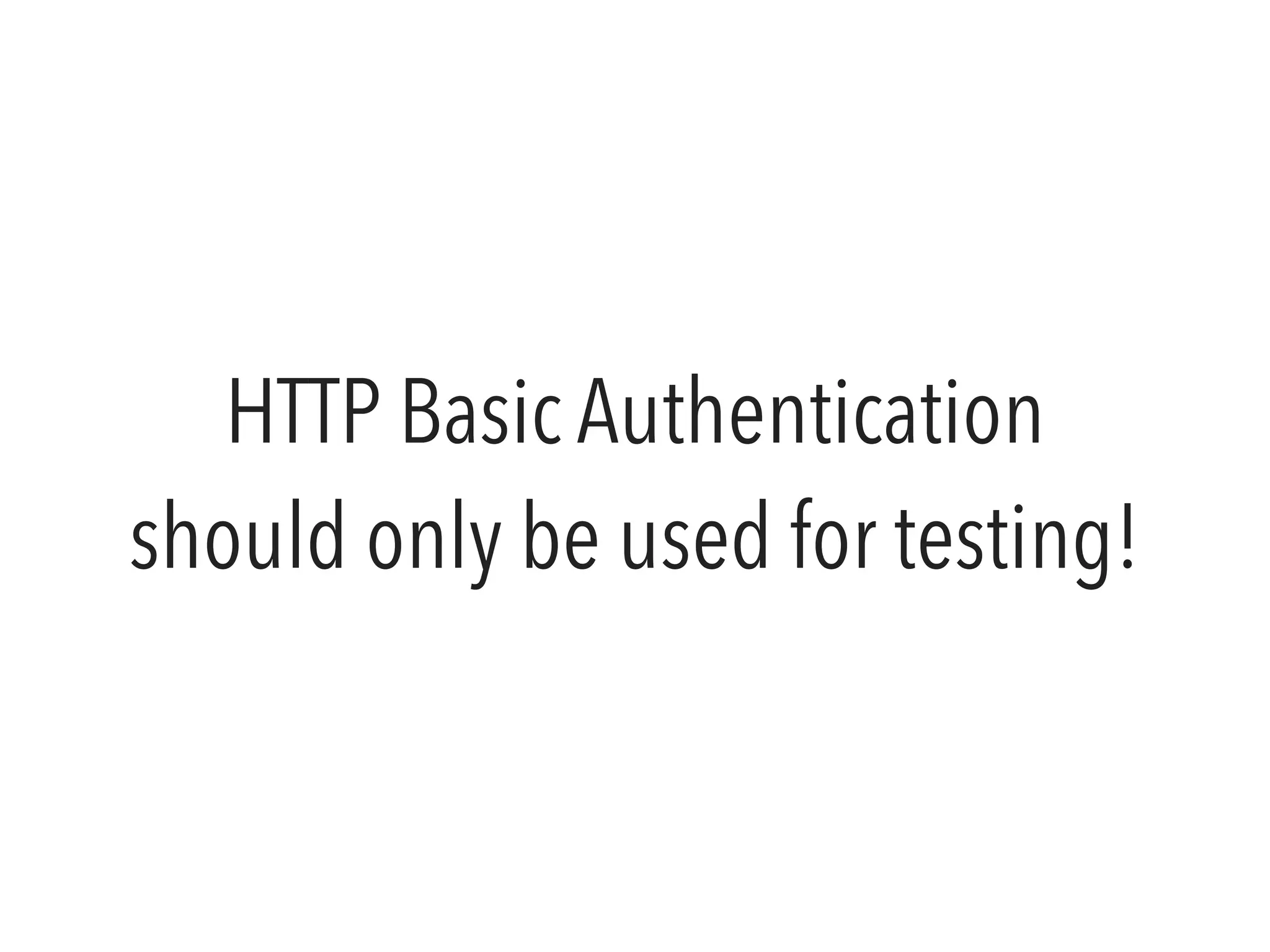
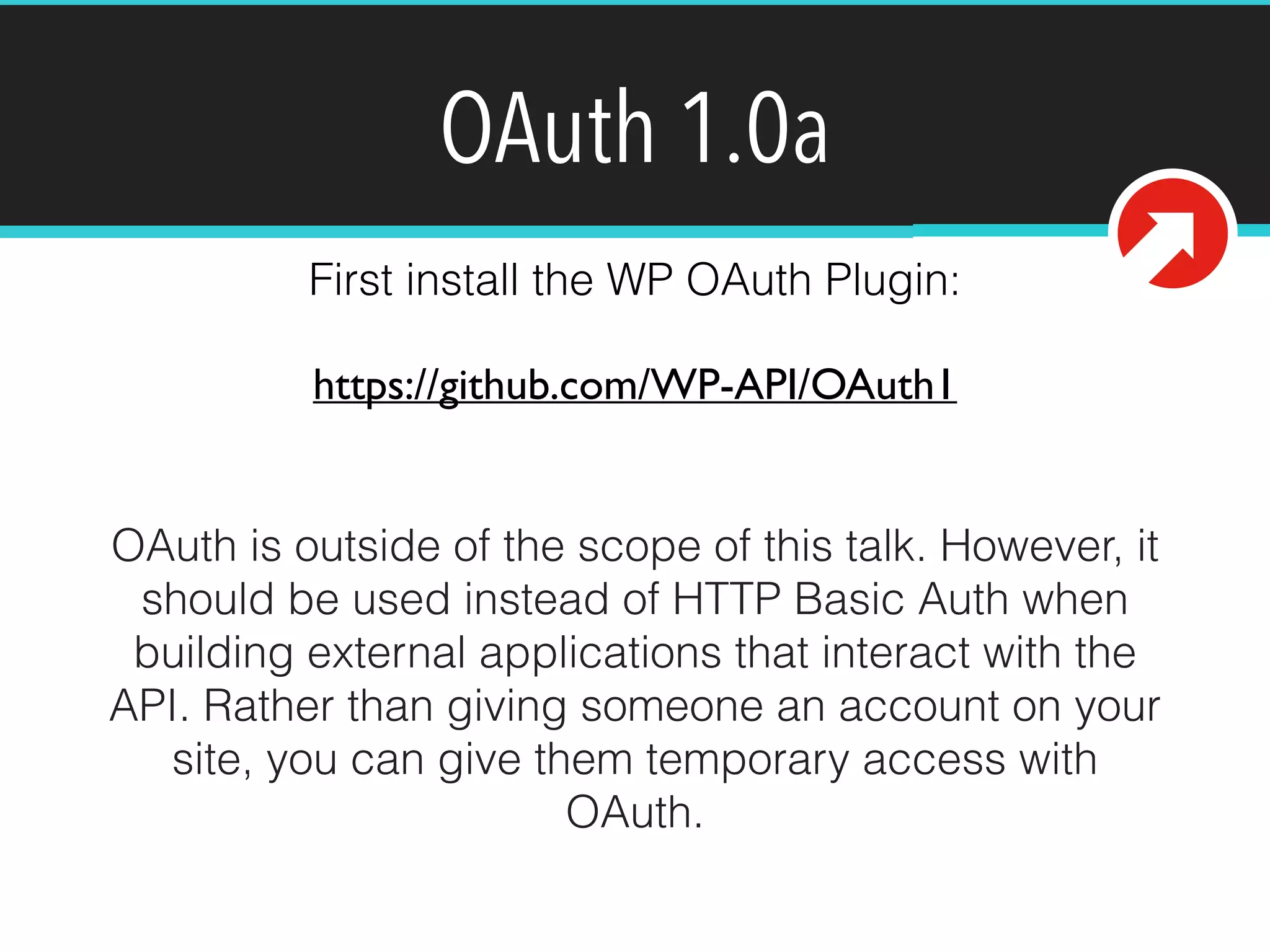
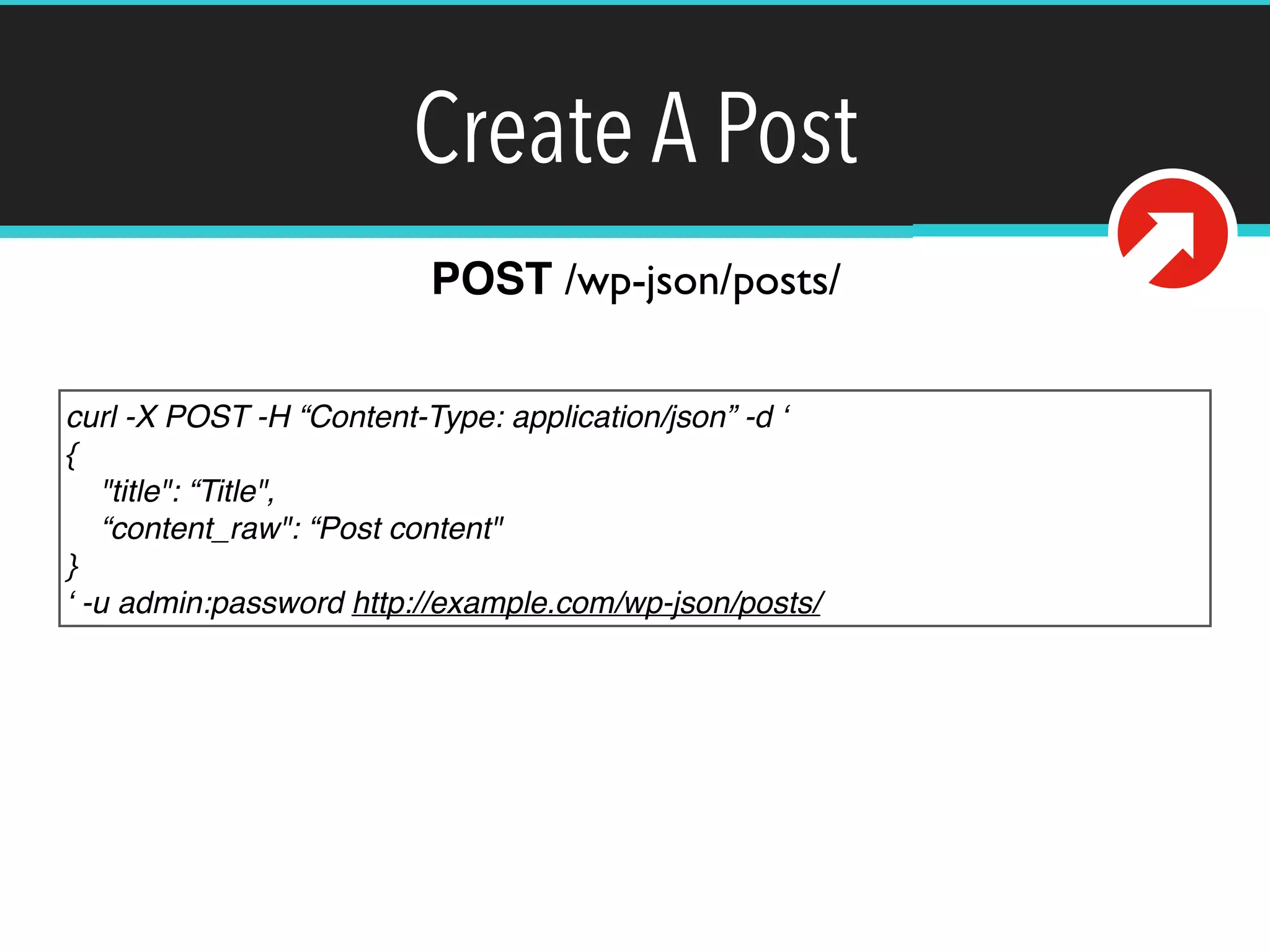
![Taxonomies
GET /wp-json/taxonomies
[!
{!
"name": "Categories",!
"slug": "category",!
"labels": {},!
"types": { /* Registered post types */ },!
"show_cloud": true,!
"hierarchical": true,!
"meta": {}!
},!
{!
"name": "Tags",!
"slug": "post_tag",!
"labels": {},!
"types": { /* Registered post types */ },!
"show_cloud": true,!
"hierarchical": false,!
"meta": {}!
}!
}!
]](https://image.slidesharecdn.com/wp-api-140927111247-phpapp01/75/JSON-REST-API-for-WordPress-25-2048.jpg)
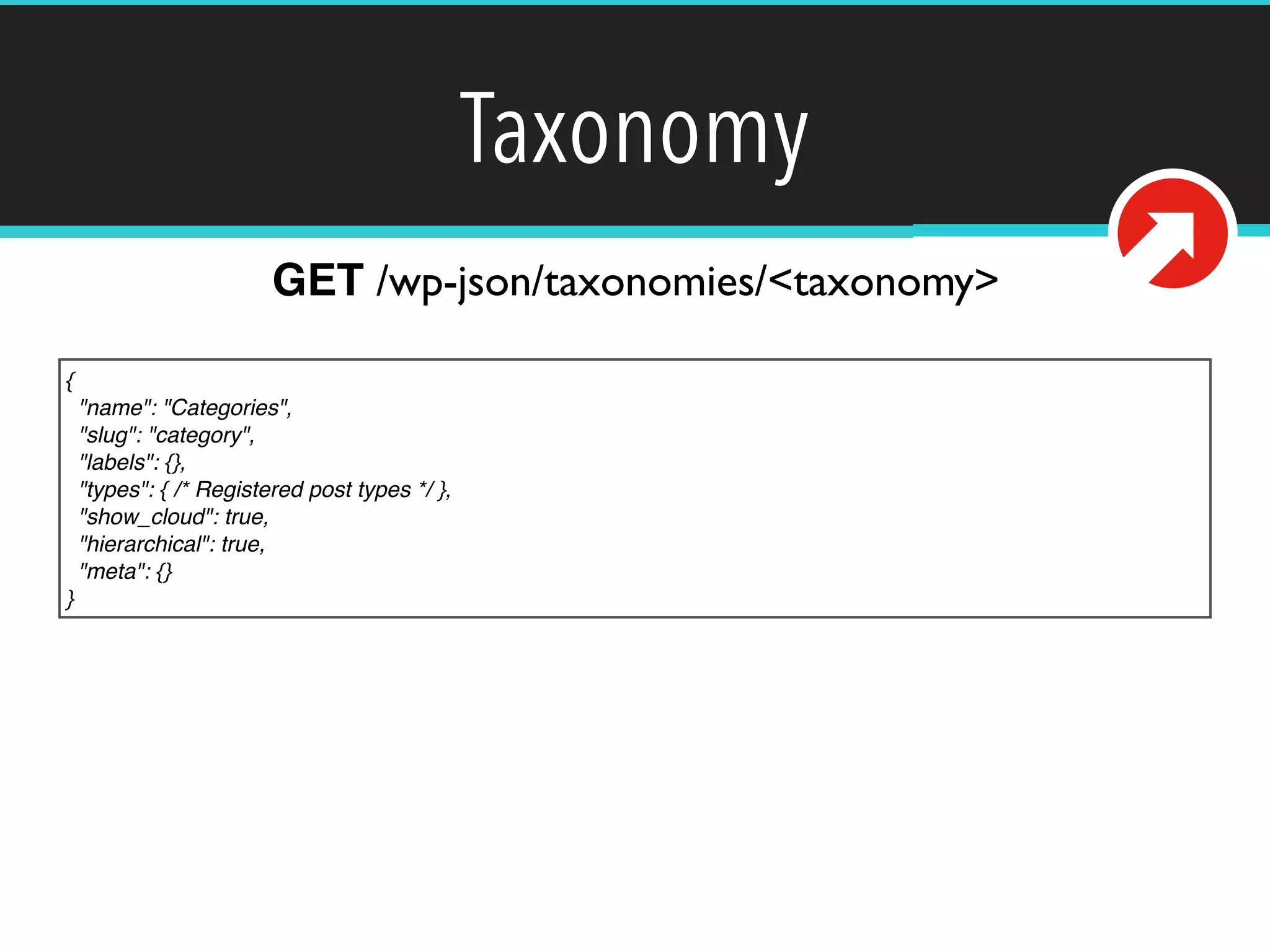
![Taxonomy Terms
GET /wp-json/taxonomies/<taxonomy>/terms
[!
{!
"ID": 1,!
"name": "Books",!
"slug": "books",!
"description": "",!
"parent": null,!
"count": 1,!
"link": "http://example.com/category/books/",!
"meta": {}!
},!
{!
"ID": 2,!
"name": "Products",!
"slug": "products",!
"description": "",!
"parent": null,!
"count": 1,!
"link": "http://example.com/category/products/",!
"meta": {}!
}!
]](https://image.slidesharecdn.com/wp-api-140927111247-phpapp01/75/JSON-REST-API-for-WordPress-27-2048.jpg)
